




















































































































At CANNA Research, we are continuously testing our products in order to make improvements. In May 2024, RHIZOTONIC will be getting an upgrade! When using the improved product you will experience increased effectiveness and tank stability. The shelf life has doubled from one to two years and you no longer need to worry about raised pH levels in your tank when applying the product. For growers, who were using RHIZOTONIC before, rest assured you will not need to change the way you use it and you can still expect exceptional results from your plants.

























Crafted from 100% natural, organic, and sustainably sourced coir pith, the Pure Harvest 75L Coco Brick serves as an excellent substrate for various planting needs.
Fast Germination
Improved Root Growth
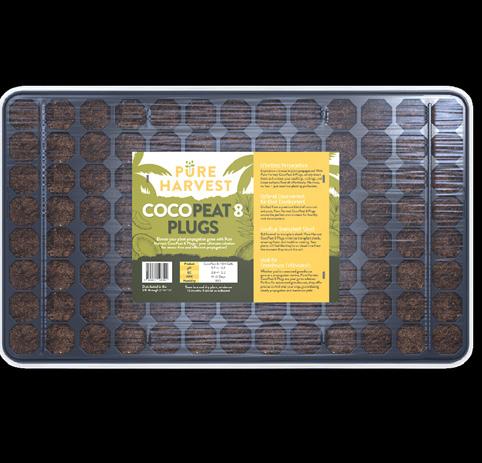
Enhanced Water Retention
Perfect for short term / seasonal crops
Elevate your plant propagation game with Pure Harvest CocoPeat 8 Plugs - your ultimate solution for stress-free and efficient propagation!
Effortless Propagation
Optimal Environment for Root Development
Goodbye Transplant Shock
Ideal for Greenhouse Enthusiasts



Hey, Chat GPT, write me a 300-word intro on how technology is great and not great at the same time, particularly regarding indoor gardening.” That would have been too easy and probably not as authentic as writing this myself. But is that where technology is taking us?
Technology isn’t only about AI. Lighting has always been a rapidly evolving element in the garden, from MH, HPS (single-ended / double-ended), plasma, CMH, and finally, the market-disrupting LED. Everest Fernandez delves into the subject in “LED Grow Lights: Past, Present, and Future.” If you want fantastic tips on creating the perfect environment, you will be glad to read “LEDs and the Sealed Cultivation Environment.”

Advances in chemistry are a form of technology we often forget. In “What is a Rockwool Microbiome?” co-writers Jeff Hayward and Colin Bell, PhD, ask if Rockwool is a lifeless, sterile substrate for plants to anchor their roots. The answer is a resounding NO—a great read by two intelligent guys.
If you want excellent hands-on gardening advice, check out Dustan Mclean’s “The Early Topping Technique.” Sometimes, all the technology you need is a good pair of scissors!
For all of the foodies out there, Jennifer Cole interviews the authors of Dinner on Mars, a book about the future of food and figuring out how to grow on the red planet. If we can do that, we can also apply the same practices to food production here on Earth. Catherine Sherriffs follows up with a feature on a new cookbook that includes planet-friendly recipes. Changing how we eat can be a significant part of the climate solution.
Remember to take a break from our electronic lives as often as possible. Get your hands dirty. If it is winter, go to your grow room and be with your plants. For all of you who do not have an indoor garden, what are you waiting for?
For those of you reading this in its paper form, thank you for going analog. But next time you are online, come say hi on IG!
Happy gardening! 3



SPECIAL THANKS TO:
Anne Gibson, Catherine Sherriffs, Chad Rigby, Cosmic Knot, Dustan McLean, Eric Coulombe & ChatGBT, Everest Fernandez, Jeff Hayward & Dr Colin Bell PhD, Jennifer Cole, Xavi Kief, and the team at Hygrow Hull.
PRESIDENT Eric Coulombe eric@gardenculturemagazine.com +1-514-233-1539
EXECUTIVE EDITOR
Celia Sayers celia@gardenculturemagazine.com +1-514-754-1539
EDITOR
Catherine Sherriffs cat@gardenculturemagazine.com



DESIGN
Job Hugenholtz job@gardenculturemagazine.com
DIGITAL & SOCIAL MARKETING social@gardenculturemagazine.com
ADVERTISING ads@gardenculturemagazine.com
PUBLISHER
325 Media INC
44 Hyde Rd., Mille-Isles QC, Canada J0R 1A0 GardenCultureMagazine.com
ISSN 2562-3540 (Print) ISSN 2562-3559 (Online)
Garden Culture is published six times a year, both in print and online.



DISTRIBUTION PARTNERS
• Creation Wholesale
• One Love Inc
© 325 Media
• Highlight Horticultur e
• HydroGarden
All rights reserved. No part of this publication may be reproduced, stored in a retrieval system or transmitted in any form or by any means, electronic, electrostatic, magnetic tape, mechanical, photocopying or otherwise, without prior permission in writing from 325 Media Inc.


II like having technology in my rooms because it gives me and the staff more time to work with the plants directly.
f there’s someone who understands medicinal plants and technology, it’s Dustan McLean. Dustan has dedicated much of his life to plants and has a deep-rooted passion for using tech to fine-tune the growing process. With 30 years of experience, he’s worked as the head of cultivation for several companies and is recognised across Canada for his work. Dustan is always looking to learn and has participated in several plant projects, including developing drought-resistant varieties. Now, it’s our turn to learn more about him!
How did you decide to get into growing?
Honestly, I decided to begin growing because I didn’t want to pay the high prices prevalent in the 90s. So, I acquired some seeds and learned how to grow properly through books and magazines.
What’s your favourite plant to grow?
Orchids are my favourite plants to grow. There are so many beautiful varieties, and that specific plant has taught me the importance of patience. Some orchids only bloom once or twice a year — and that wait can be tough — but once they do, the payoff of their beauty is well worth the wait.
You love to incorporate technology into your growing regime; how come?
I like having technology in my rooms because it gives me and the staff more time to work with the plants directly. Technology can help me understand how the grow spaces are performing environmentally and allow me to make necessary adjustments earlier based on real-time data. This helps keep costs in line and production at a premium.

How do you like to spend your time outside of work?
I enjoy spending time with my family and friends, drumming and driving my 55 Chevy when possible. It’s important to have fun outside of the gardens, too.
What’s your favourite food?
My favourite food — without a doubt — is fresh sushi. I’m a sucker for a good spicy tuna roll! 3

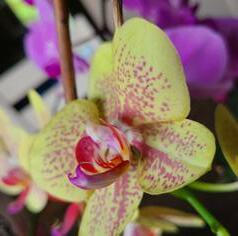

Are you interested in writing for Garden Culture Magazine?
We’d love to hear from you! Send us an email introducing yourself with a sample of your work editor@gardenculturemagazine.com

Sustainable, peat-free options for gardeners looking to nourish plants while reducing environmental impact.
All•Mix Peat Free provides a rich, pre-fertilised medium that mimics outdoor soil. It offers a microbe-rich ecosystem that supports plant growth, making it ideal for flowers, vegetables, houseplants, and shrubs. It sustains plants for several weeks without added nutrients.
Light•Mix Peat Free combines coir, wood fibre, composted bark, and other renewable materials to replicate peat’s lightness, aeration, and moisture retention benefits. Its airy structure promotes excellent drainage, reducing waterlogging risks— perfect for seedlings and young plants. Both blends support healthy growth while prioritising eco-friendly ingredients.


Biobizz’s new peat-free substrate range offers sustainable, eco-friendly alternatives for all types of growers.
Visit Biobizz.com for more information on the entire range.
Rapidly becoming a very popular size in the industry, the 240x240x200cm BudBox PRO Titan Plus has 20 port options in 4 sizes, 5 doors, a stack of roof bars, hanging straps, night vision windows, screened passive vents, and so much more. From the UK’s #1 – BudBox – with all the options you need and the quality and reputation to back it up. With over 24 years of grow tent experience leading the industry, your plants are in safe hands in a BudBox. Environment is everything.

The LEDSTAR delivers exceptional light quality. It features an 8262K spectrum that delivers cool, blue-toned light, ideal for propagation and vegetative growth. It mimics natural spring daylight, promoting strong roots, compact growth, and healthy plant development.
It is also 60% more efficient than standard fluorescent lighting, helping reduce energy costs without compromising performance. It delivers up to 50,000 hours of use, with only a 20% loss after 30,000 hours, ensuring reliable, long-term operation.
Designed to daisy chain up to 30 lights, the LEDSTAR is scalable and

external controllability through the onboard driver. Using a fit-for-purpose driver improves the fixtures’ overall performance compared to ballast-driven units in the market.
The XLED features a unique staggered arrangement of chips to ensure even light distribution across your crop. It also includes an additional 660nm red chips for a perfect flowering stage.
Manufactured and distributed exclusively by HydroGarden.






Mills Ultimate Coco with Cork is a fine blend of 75% RHP-certified coco peat and 25% fine cork. This perfect combination provides superior aeration for the ultimate root development, so perlite is unnecessary. It is ideal for both indoor and outdoor cultivation. Simply add Mills Ultimate Coco with Cork to your pots, spread it evenly, and start your grow!
Mills Ultimate Soil with Cork is a premium blend of peat, coco chips and fine cork. This substrate provides the perfect amount of nutrients for the first 4-6 weeks of growth, ensuring the successful cultivation of all plants, fruit and vegetables. Suitable for indoor or outdoor use, this soil with cork mix will maximise growth and enhance your plants’ natural flavours.
For best results, use alongside Mills Nutrients.Visit GrowWithMills.co.uk for more information.

The updated SKRAM MIST®️ formula incorporates medium and longchain fatty acids for superior pest control. This advanced formulation penetrates pests’ external body walls more effectively, delivering immediate knockdown and disrupting vital metabolic processes.Target pests, including aphids, thrips, whiteflies, and spider mites, experience instant feeding cessation, reducing reproduction and egg viability.
Perfect for Integrated Pest Management (IPM), this new formula enhances pest resistance management with no cross-resistance. Safe for all crops, pollinators, and beneficial arthropods, it biodegrades quickly without harmful residues.
For sustainable and powerful pest control, the new SKRAM MIST®️ sets the standard in professional plant protection. Ask for it at your local store.


Do you grow with Coco or with LED lights? If so, using a calcium and magnesium supplement is a good idea.
VGN CALMAG is certified ORGANIC made from residual plant matter, so no animal byproducts are used. It contains directly available nutrients for your plant and will support cell walls, cell production and photosynthesis –everything a plant needs for strong growth!
You can use it during the flowering and ripening phases. VGN CALMAG does not contain Nitrogen, so it won’t change the EC.
“Good things come in small packages” surely couldn’t be more appropriate when describing the Maxiswitch Pro Quad timer from Maxibright. It may look small and unassuming, but it is mighty in its performance.The 13-amp unit can easily control various setups: 4 x 660W or 2 x 1030W LED fixtures and 4 x 600W 2 x 1000W HID lights from a single wall socket. The Pro Quad frees up precious socket space for other crucial grow-room equipment.

Give it a try. You will taste and feel the difference!

Whether you need a timer for one light or are considering expanding your small hobby room, the Maxiswitch Pro Quad Timer has you covered.
Manufactured and distributed exclusively by Highlight Horticulture. Contact your local grow store for more details.
With a concentration of 900 propagules/gram, DYNOMYCO improves nutrient uptake, resulting in healthier, more resilient plants and higher yields.
Containing unique strains that develop robust, beneficial symbiotic relationships with plant roots, your plants benefit from an enhanced capacity to cope with stressors.

Based on decades of research, the team behind DYNOMYCO include biologists, agronomists and soil health experts who have perfected its formulation.
Tested and proven beneficial by hundreds of thousands of growers worldwide, customers have demonstrated 10-45% yield increases compared to control groups!
Check out Dynomyco.com to learn more.
What if the best fertiliser for soil was a hydrofertiliser?
Most fertiliser options seem rather complex: two bottles for growth, two for flowering, and essential supplements. That’s why Terra Aquatica created TriPart®️ fertiliser: complete, easy to use, and effective. With its three parts, it meets the needs of plants at every stage of their life, whatever your playground (hydroponics, coco, or soil).
Used by top universities and research laboratories, including NASA,TriPart®️ remains the ultimate formula, based on over 30 years of testing. It goes beyond basic nutrients by offering a full range of chelated micro-nutrients for optimal absorption and stability.
TriPart®️ Micro, available in soft and hard water formulas, optimises calcium levels in the nutrient solution, avoiding the blockages and deficiencies often seen with universal fertilisers.

Using LED technology for growing plants has quickly become the go-to option for growers wanting the best output and quality. LEDs have surpassed their traditional HID alternatives, introducing new possibilities for plant growth potential.
One possibility is fine-tuning the spectrum with the Maxibright DAYLIGHT 60W Attach it to an existing DAYLIGHT LED full fixture or use it independently for options; their 2.3umol/J efficiency makes it a no-brainer for almost any discerning
Manufactured and distributed exclusively by Highlight Horticulture. Contact your local grow store for more details.



Available in: 0.5 L, 1 L, 5 L, 10 L, 60 apart
you paid, the new Chikamasa Finishing Scissors offer excep tionally sharp blades, unmatched reliability and lifespan. Ergo nomically designed for prolonged use with a unique handle

CHIKAMASA continues to set the standard in hand



Ihave used soil and water testing products from almost every company throughout my growing career. Although I have nothing negative to say about them, my experiences with Bluelab have been so positive.
A good friend inspired me to start growing indoors 22 years ago. Like many new growers, I followed my friend’s recipe, used the same products, and had the same results. He gifted me his old Truncheon. I used it for over 15 years without fail until one tragic day when it mysteriously disappeared.
I used several different products for the next couple of years; they all worked until they didn’t, and I didn’t love any of them. About four years ago, I got the Bluelab Guardian. Getting excited about water-measuring equipment is weird for most people, but this product has been exceptionally good. Like the excellent grower I am, testing and calibrating my equipment is vital to my success. I would check my Guardian every week, then every month. After the first year of use, it still did not need to be calibrated. I still calibrate it monthly, but it never needs it. I am now a big fan of the leave-in-your-reservoir monitors. I like quick access to my water’s pH, EC and temperature. And now I have another Bluelab product to love—the Bluelab Onepen. To be fair, I have only had it for a couple of months, but its robust design, silicon cap, and Bluetooth connection to the Edenic app allow for real-time sharing, updates, and comprehensive data management.
If you are not using water measuring equipment or are in the market for new equipment, Bluelab products are great value for the money, and this grower highly recommends them. 3








Use with seedlings and young plants for rapid root growth, pla nt vit ality a nd abundant branching




#gardenculturemagazine
#gardenculturemagazine
#confessionsofaukhydrostore
#confessionsofaukhydrostore

Are you looking for expert growing tips and a wide range of products for your next venture? Then visit one of Hygro Hull’s two locations (on Hessle Road or Oslo Road)! Mike Cragg and his team pride themselves on offering excellent and honest advice to people looking to produce healthy plants with incredible yields. We convinced Hygrow Hull to join us for this edition of Confessions of a Hydro Store !



How long have you been in business, and how has Hull changed since you opened?
We opened our doors in February 2011. With 3000 sq feet, we have plenty of choice and stock for customers. In February 2013, we opened a smaller store (pictured) West of the city, allowing clients from all directions to visit.
Describe Hygrow Hull in five words or less.
Welcoming, Professional, Knowledgeable. That’s Hygrow Hull.
What do you enjoy the most about operating your shop?
Meeting new and old customers and relating to their growing demands and needs.
What are some of your favourite products and why?
Some of our favourites include:
1. C.o.2 - It works wonders with LED lighting and is now more affordable to the customer.
2. LED Lighting - Bigger yields!
3. Flower Bomb - It does what it says on the tin for harder fruits.
4. Shogun Nutrients & additives - Excellent value for money and no £ increases for 2025.
5. U GO EC Silenced fans - They come with a twin digital controller at no extra cost as standard.
1
What is the craziest thing you have witnessed in your shop?
Customers asking for a bottle of ‘A’ for an A/B Nutrient brand. The customer says only to use A in the flower stage for the best-looking green plants!
What is the best thing that has happened to Hygrow Hull in the past few years?
Building up an established, reputable, honest reputation within the growing community and making great friends with people with the same mindset.
What is your favourite plant to grow? All plants!
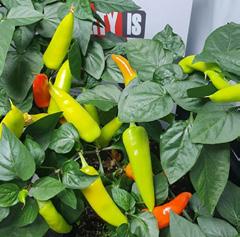

Professional, Knowledgeable. That’s Hygrow Hull.
How important is customer loyalty, and how do you retain it?
Maintaining good working customer relations is critical. We offer the best and most honest advice (something you don’t get when purchasing online!).
Why do you think coco has become so popular and stonewool is way down?
Coco has always been the most popular substrate in this area since we opened our doors.
Do you have any final words for our readers?
Don’t delay, Get growing today. 3 Want to be the next Hydro Store to
Take a picture of this edition of Garden Culture Magazine in your shop, post to Instagram and tag @gardenculturemagazine. OR Send your info to social@gardenculturemagazine.com

A sealed growing environment gives you unparalleled control over growing conditions
More and more growers are moving from running ventilated to sealed grow rooms. Has this trend been catalysed by the widespread adoption of LED grow lights? Everest Fernandez explores the reasons behind this ‘growing’ phenomenon and shares some time-honoured tips for making the transition to sealed cultivation environments as smooth as possible.
“Plug in a grow light, and you’re plugging in a problem.”
Believe it or not, this curmudgeonly advice was dispensed to me by a manufacturer of high pressure sodium (HPS) grow lights! (I should add that this pre-dates even the earliest ‘blurple’ LEDs.) My mentor had long been aware of the pros and cons of HPS grow lights and didn’t pull any punches about their limitations. While HPS produces an impressive red-rich light with plenty of angular intensity, these old-school fixtures generate considerable heat via conduction, convection, and radiant (infrared).
The answer for most HPS growers back in the day was air exchange—serious air exchange! Indoor cultivators invested in 8”, 10”, or even 12” inline extraction fans and ducted all that hot air away. Moreover, these huge (and often noisy) extractors would often work in tandem with slightly smaller input fans to completely replace the air in the cultivation space, typically once every one to three minutes.
Heat was our primary bogeyman back in the HPS era. Indoor growers avoided high air temperatures at all costs. If your grow room’s daytime highs started to creep into the 80s (say, 28°C or more), trouble wasn’t far away. These high air temperatures and the radiant heat emitted from the HPS lamps would send vapour pressure deficits (VPD) rocketing. This, in turn, would quickly lead to nutrient toxicities, stunted plant development, and massively degraded crop quality. Secondary metabolites were vaporised in the heat!
Ventilation killed three birds with one stone. Sure, our industrial air exchange solutions valiantly tackled the HPS heat monster head-on, but they also helped to moderate humidity levels and replenish carbon dioxide to atmospheric norms. Growers in warmer climates often chose to run their HPS and metal halide (MH) lamps in huge, cumbersome air-cooled hoods, using additional inline extraction fans to blow air constantly across their lamps during operation. This helped to remove the hot air as close to its source as possible. Still, it also reduced light output by 5% or more, and the spectral quality of metal halide lamps was markedly degraded by air-cooling, too—the cooler lamp temperature made their overall output ‘greener’—not the most efficient type of light for photosynthesis!
Suffice it to say that my mentor wasn’t far wrong. But growing in a ‘sealed room’? Surely, that was for the pros who didn’t mind plugging in chunky air conditioners and waving their checkbooks at the attendant power bill.
A sealed growing environment gives you unparalleled control over growing conditions. Unlike in ventilated spaces where you’re constantly battling the whims of external weather, a sealed environment is a true indoor sanctuary where you truly set the rules. You combat your three grow room environment foes directly: Carbon dioxide generators ensure that CO2 levels are two- or three-times atmospheric levels, turbocharging growth rates. Air-conditioning tackles high air temperatures and performs some dehumidification. And dedicated dehumidifiers can deal with the humidity head-on, regardless of the air temperature.
Meanwhile, the advent of full spectrum LED grow lights means growers can produce more photons per watt, enjoy a broader spectrum, longer lifespan, and a lower cost of ownership over HPS. But the devil is in the details! Some of those LED efficiencies came at a price. It turns out that all that infrared radiation from HPS lamps was kind of useful for increasing the internal temperature of leaves and driving the metabolism of your plants. LEDs emit next to no infrared directly from their diodes, so indoor growers run their LED grow rooms at higher air temperatures to compensate. Now, the low 80s Fahrenheit (28 - 30°C) isn’t beyond the max, it’s the target!


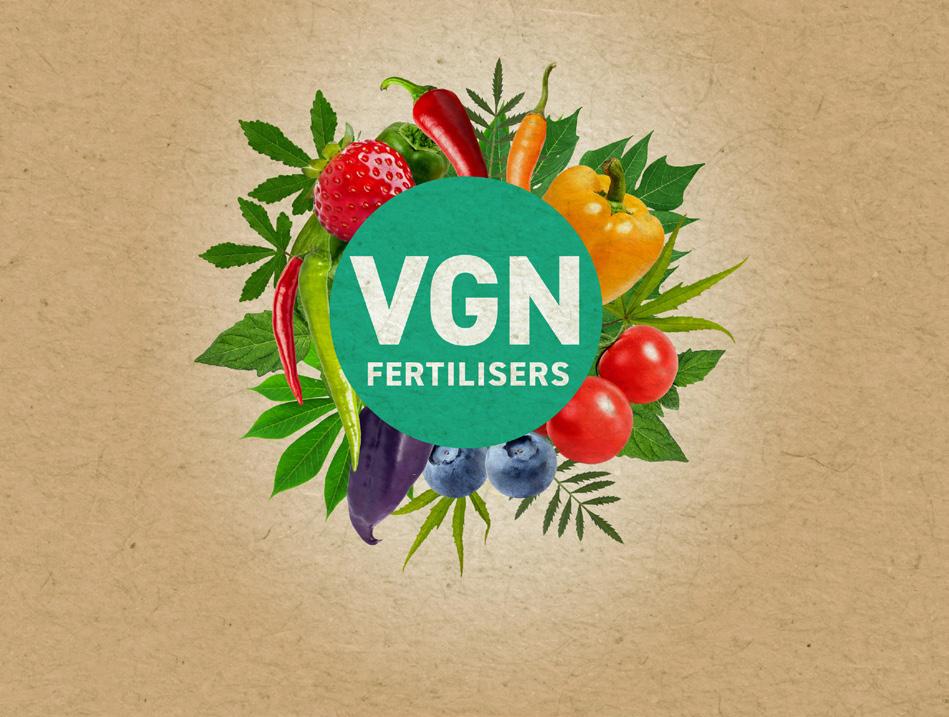

Approved for Organic Farming by Control Union
Nutrients direct available for plant
Rich in micronutrients
Easily degradable in nature
Supports a circular economy


VGN, where sustainability meets innovation. These veganic fertilisers are the result of transforming plant waste into solutions for your plants. All VGN products are certified for organic farming by the Control Union. With VGN fertilisers you nourish your plants while supporting beneficial micro-organisms. A healthy soil life is the foundation for healthy plants!



High-efficiency air conditioning units, specifically designed to handle the unique requirements of a grow room, are a must for sealed indoor grow rooms
So, what’s the big deal? LED grow rooms run a little warmer! But here’s the kicker. Try ventilating your LED grow room in the old style, and you risk air temperatures falling too low—especially in the winter months. Dial down your extraction fans to guard that precious heat and high humidity rears its ugly head. Plug in a dehumidifier, and you’re still running the risk of depleted carbon dioxide!
Running a carbon filter as a scrubber in a sealed room environment is still a good idea. It not only helps to minimise any unwanted odours from your garden but also helps keep the air clean. The only difference is that the clean air is circulated within your grow room, not exhausted out.
High-efficiency air conditioning units, specifically designed to handle the unique requirements of a grow room, are a must for sealed indoor grow rooms. Grow room-ready air conditioners have specially adapted condenser units that operate more efficiently in cold weather. They need to operate 24/7, offering programmable settings to adjust the temperature according to various stages of plant growth. Choose a reversible AC unit capable of heating your grow room, too. Also, it’s wise to have a backup. In the worst-case scenario where your primary system fails, a secondary unit could save your entire crop.
Plants transpire upwards of 90% of the water they consume. That’s right—over 90% of the water you feed your plants ends up back in the air! Suffice it to say, a room full of heavily trans-
piring plants will quickly become a fungal-rich swamp unless you counter the humidity. Commercial-grade dehumidifiers are your primary tool for reducing humidity. These machines are designed to work in tandem with the sealed environment, often with features that allow them to operate more efficiently in a closed system.
Top tip: Choose a dehumidifier that doesn’t require manual switching on in case of a power outage!
Dehumidifiers are typically rated in terms of the maximum amount of moisture they can remove from the atmosphere. This can be specified in PPD (pints per day) or LPH (litres per hour). To determine what size dehumidifier you need, you simply need to match it (at minimum!) with the volume of water your plants drink. So, if your plants drink 24 litres per day, you’ll need a dehumidifier capable of removing a litre per hour. If you’re unsure how much water your plants drink, multiply your canopy area (in metres squared) by seven. If you’re more of a feet and inches person, we’ll have a moment’s silence, and then solemnly give you an alternative formula: your dehumidifier’s PPD rating should be equal to or more than the square footage of your canopy. 160 square feet of canopy = 160 PPD of dehumidification power (minimum!).
In some instances, such as early vegetative growth, when your plants aren’t transpiring much, you may need to add moisture back into the environment. Evaporative humidifiers can introduce humidity without significantly affecting the room’s temperature.
A sealed environment allows you the luxury of elevated CO2 levels, a crucial factor in improving yield. But elevated doesn’t mean unlimited
A sealed environment allows you the luxury of elevated CO2 levels, a crucial factor in improving yield. But elevated doesn’t mean unlimited. Too much CO2 can be as harmful as too little. CO2 generators and pressurised tanks offer different advantages and drawbacks. Generators produce CO2 by burning propane or natural gas, making them more suitable for large-scale operations. Pressurised tanks are simpler but require regular monitoring to prevent depletion.
Monitoring is vital. The placement of CO2 sensors around the room, especially at the canopy height, will give you the most accurate readings, enabling you to fine-tune your delivery systems accordingly. Most indoor growers aim for 1200 – 1800 PPM CO2
This one catches out a lot of new sealed-room growers. You still need to ventilate your “sealed” room—so don’t be blocking up those duct holes just yet! When your lights go out, you will need to perform what is glamorously referred to as a “dump”. Most indoor growers stop supplementing CO2 an hour before lights out. Then, when the lights finally switch off for the night cycle, a pair of dedicated inline extraction fans perform an air exchange, replacing your grow room’s air with “regular air”. This is important for the respiration phase. Growers who omit this step report yellowing on plants and stunted growth.
Converting from a ventilated to a sealed cultivation environment is a significant but rewarding challenge. It offers a level of control that’s virtually impossible to achieve in a non-sealed setting. With modern technology and a thorough understanding of plant physiology and environmental variables, you can create an ecosystem where your plants don’t just survive; they thrive. 3
Everest Fernandez is a well-respected industry educator, veteran hydroponic grower and grow light enthusiast, based in France. He works primarily as a marketing and cultivation consultant and was the founding editor of Urban Garden Magazine in the UK, US and Canada. He also writes and researches for the popular hobby horticulturalist YouTube channel, Just4Growers.
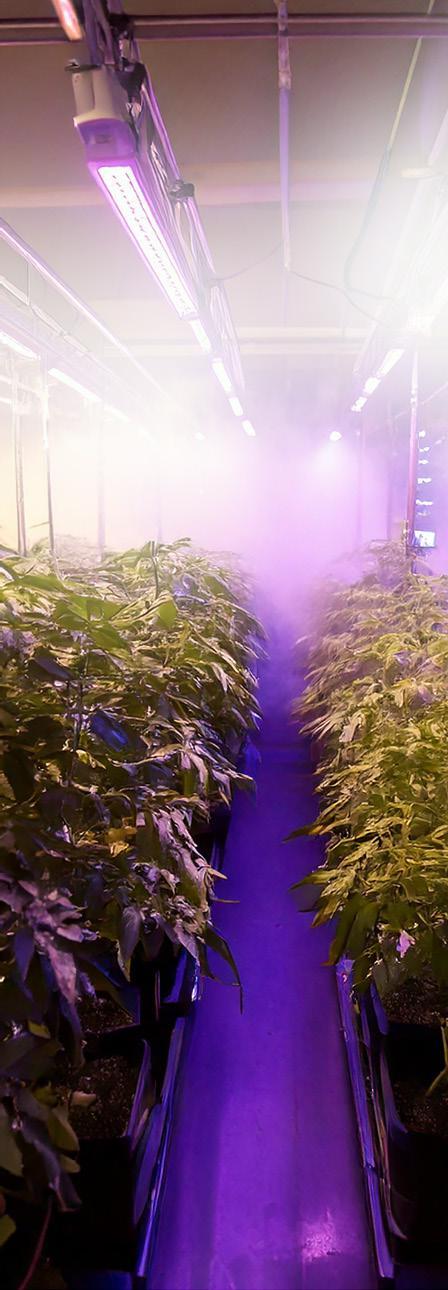
With modern technology and a thorough understanding of plant physiology and environmental variables, you can create an ecosystem where your plants don’t just survive; they thrive



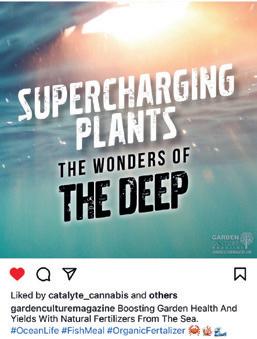

































The Maxibright Varidrive 720W LED is a foldable LED fixture with an impressive total output of 1870 μmol/s of full-spectrum light, delivered uniformly over a 1.5 x 1.5m area via an array of high-quality LED diodes. Additional red light makes this fixture perfect for flowering, as well as the vegetative stage of growth. Powered by the Maxibright Varidrive 600W variable power pack, giving you the option to dim the LED, as well as the ability to mount your power pack directly to the LED unit, or connect remotely to help control temperatures in your grow room.
720W power, 1870 μmol/s total light output (PPF)
6 bar LED fixture, designed for a 1.5 x 1.5m area
Additional red light for enhanced flowering
3-year warranty
High-quality diodes

Full spectrum light output for the complete grow cycle
Dimmable: 250W, 400W, 600W, 720W (Boost)
Foldable and lightweight
One-person assembly
50’000 hours lifespan
Dimensions: 1100 x 1075 x 50mm
Powered by Maxibright Varidrive variable power pack.
Connect to fixture or use remotely with 10m extension lead
(Lead sold seperately)



Stone wool growing media can help cultivators enhance crop yield, improve quality, and achieve a more consistent product. Stone wool offers many advantages, including superior uniformity, cleanliness, and the potential for precision growing. However, it must be implemented effectively when transitioning from coco or peat-based substrates.
Irrigation Efficiency helps the grower steer the crop using a 24-hour water content (WC) graph. This allows them to create strategies to maintain a desired WC percentage, Electrical Conductivity (EC), and steer the crop generatively/vegetatively.
WC Uniformity over the height of the block ensures even WC and EC.
WC steering range —The ability to control the WC allows the grower a better range to steer the crop, maintaining a larger area of active root zone and giving the plant more space to colonise with roots.
Things to make sure your facility/garden is equipped with:
Precision irrigation is the ability to deliver a specific volume of water directly to the plant roots, allowing cultivators to apply various schedules to the crop at different times in the crop cycle. As a result, many irrigation events can take place over the day. A system capable of this is crucial, as an active climate leads to increased nutrient solution consumption by the plant, which must be replenished regularly. To help growers, Grodan created a 24-hour water cycle to help visualise what an irrigation strategy in stone wool should look like:
The chart below shows the “day dynamic” for irrigation. It shows how the Water Content (WC) and Electrical Conductivity (EC) behave in the root zone daily.
• Period 1 (P1) is the time from first irrigation until first drain. It occurs after lights have come on (or the sun has come up) and the plants have begun transpiring. Transpiration before irrigation is an important rule in this period. Several irrigations should be applied to build up the water content until the point of the first drain.
• P2 takes place when first drain occurs and concludes with the final irrigation event. This period is the drain and water content maintenance phase. During P2, several drain events may be achieved to refresh the nutrient balance and control the substrate EC.
• P3 is the dry-back period of the day. This period will begin after the final irrigation event of the day. The irrigation stop time in, in combination with the start time in the subsequent day’s P1, is used to manage and control the total dry-back during the night-time period. Larger P3 dry-backs will offer plants a generative cue, while smaller P3 dry-backs will create more vegetative balance. Golden rule: “transpiration before irrigation’


When using stone wool media, your system must use the correct flow rate (0.33-0.5GPH) pressure-compensated emitters. A few visual cues indicate a high flow rate in the root zone. When the proper flow rate is applied, the roots remain with the substrate. You will see extensive root colonisation throughout the block/slab. When a high flow rate is applied, you will notice that the roots tend to grow along the length of the table.
If growers use higher flow rate emitters, they will encounter issues rehydrating the blocks during P1. They may notice that their WC percentage stops rising and plateaus, triggering an early drain known as “False Drain.”
If the flow rate is too high for the stone wool, it will not be able to absorb the applied nutrient solution efficiently. This causes the irrigation solution to find the path of least resistance and channel directly through the product. The direct channelling prevents adequate refreshment of the EC, causing it to rise. The nutrient solution must be absorbed to help refresh the substrate and stabilise the EC.
The two main types of automated fertigation are batch injection and in-line/direct injection. Batch injection will use a mixing tank to make the recipe as needed or multiple batch tanks that can only hold one recipe at a time. In-line (direct injection) fertigation uses dosers and injection units to mix the nutrient and water ratio as needed, delivering this nutrient solution directly to the plants. Depending on the facility’s square footage and number of rooms for various phases of the crop cycle, growers will pick the injection method that makes the most sense. Both can be used effectively with stone wool media.
Stone wool offers many advantages, including superior uniformity, cleanliness, and the potential for precision growing
When growers do not use sensors for root zone visibility in the facility, it hinders overall success and affects the repeatability of harvests. Sensors like GroSens, for instance, give the grower a more granular view of the substrate and allow for exact irrigation strategies to be deployed. Root zone sensors take away the guessing game, with real-time data aiding in your decision-making about when to irrigate.
With stone wool substrate, growers can reduce their overall fertiliser and water usage and recirculate the nutrients in systems that allow it. Over-applying nutrient solutions will influence your bottom line. Creating precise irrigation strategies will enable the grower to give the plant what it needs when it needs it.
Visit grodan101.com for more learning. 3

BIO Chad is a Crop Specialist for Grodan. He attended the University of Guelph for his Bachelor of Science in Environmental Biology, minoring in Plant Sciences. Chad’s passion is assisting growers in crop optimisation through crop steering and precision growing. His work has taught him how to cultivate plants in various settings (Indoor and greenhouse). With this knowledge, he helps growers implement irrigation strategies and strive for continuous improvement.
BY JEFF HAYWARD AND

COLIN BELL, PHD

If you ask a microbiologist if Rockwool is a sterile growing media, the answer would be ‘NO’ 100% of the time. We know because we are microbiologists and have studied this topic in detail.
Many growers conceptualise a spectrum of growing management practices, from sterile Rockwool conditions on one end to living soil (organics) at the other. We argue that this concept is not entirely accurate. So, is Rockwool a lifeless, sterile substrate for plants to anchor their roots, or is there more to the story?
Rockwool is a manufactured product made from molten rock that has been melted, spun into fibres, and then formed into blocks or slabs to use as a cultivation substrate. Growers use Rockwool because it has significant advantages as a growing media:
If you ask a micro-biologist if Rockwool is a sterile growing media, the answer would be ‘NO’ 100% of the time
• Rockwool is consistent, with little variability between the blocks and slabs.
• Due to the extreme heat in the manufacturing process, Rockwool is thought to prevent or kill pests, harmful microorganisms or viral pathogens.
• Rockwool is structurally inert, with no nutrient exchange capacity, a relatively neutral pH, and a very high water porosity percentage, making it an ideal substrate for precision irrigation techniques like crop steering.
Historically, Rockwool growers have used synthetic nutrients and followed some form of sterile growing practices by adding chemical disinfectants to their irrigation programmes throughout the plant growth cycle to emulate a sterile media management practice. Therefore, it is unsurprising that many presume these systems to be sterile.
Although Rockwool growing media arrives sterile off the production line, researchers have found that hydroponic cultivation systems using Rockwool only remain sterile for a short time. As plants grow in Rockwool, they develop an increasingly complex root zone microbiome throughout the crop cycle. We generally discuss these processes in terms of natural, soil-based ecosystems or coco or peat-based soilless growing media. We see a similar process across all substrates. It can be hard to see how these natural processes apply to Rockwool and other hydroponic systems. But, as it turns out, plants and microbes coexist in the Rockwool system.
Microbial UbiquityBusting the Myth of Sterile Growing
It is helpful to introduce a fundamental concept to environmental microbiology called ubiquity. Ubiquity simply states that microbes are everywhere—they are omnipresent—and the environment selects them. Microbes are in the air we breathe, in the water we drink, on our skin, and inside our bodies. Of course, this is also true for plants.

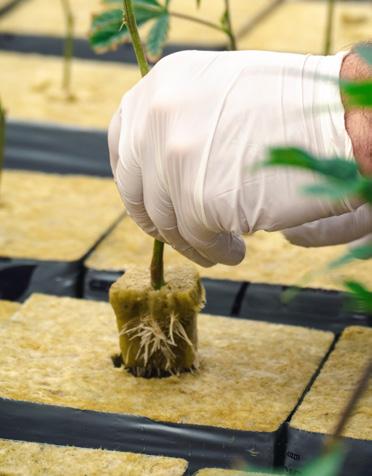
Teaching microbiology in the college classroom for over a decade, we used to give students a swab and ask them to take a sample from anywhere - a door knob, their phone, the floor, wall, etc. We have asked the same of growers who assumed their systems were sterile. First, a sample of the fertigation solution or runoff from the growing media is taken. We introduce it to a media Petri dish and observe a surprising variety of microbes colonising it within days. Microbes are ubiquitous and can be found everywhere, including in our cultivation facilities. The second part, environmental selection, suggests that although microbes are everywhere, the environment selects for the dominant success of different microbial species. Various environmental parameters can influence and favour certain microbial species over others. If we apply this to a cultivation facility, this suggests that growing media, moisture, temperature, pH, EC, and plants themselves will all have an impact on which microbes persist in the root zone. In a Rockwool garden, the ability of microbes to survive disinfectants like hypochlorous acid is also a critical selection pressure.



Consider
using microbes to your benefit
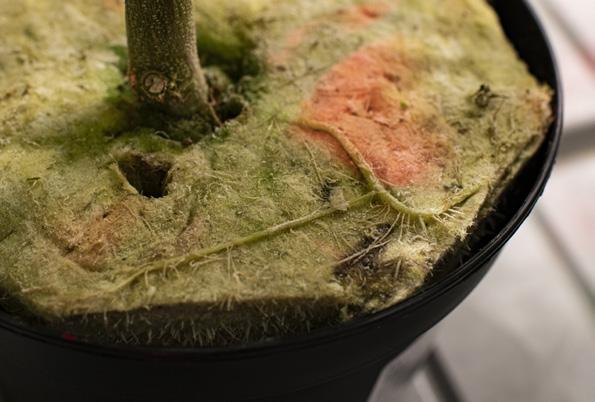


Microbial groups that cannot survive in these conditions will be eliminated, while those that can survive are left to establish colonies and dominate the system. Many microbial groups—including beneficial microbes and plant pathogens—are well known to persist in disinfectants. So, despite our best efforts, it is impossible for horticultural systems ever to be sterile. It only takes a small fraction of the millions of ubiquitous microbes floating around our environment to colonise the root zone and create a substrate environment teeming with microscopic life.
Given the advantages that microbes offer to support plant success, is sterility a good goal?
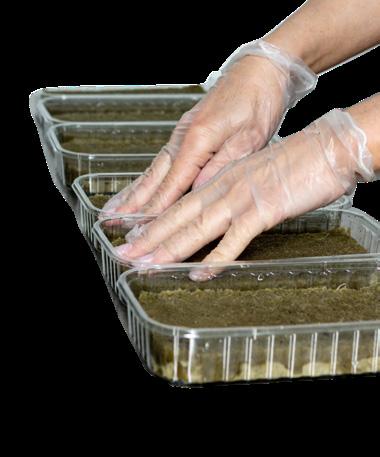
Now, let’s consider the impact of plants, specifically root exudates. Root exudates are organic compounds that living plant roots continuously release into the soil and substrate. Evolutionarily, plants started doing this hundreds of millions of years ago because they learned they were more successful (more reproductive growth) by supplying root exudates into their rhizosphere to support root-microbe activity. Root exudates account for up to 40% of the plant’s photosynthetic activity, indicating that plants are very committed to encouraging the proliferation of microbes in the rhizosphere. This suggests that the plant is working against sterile growing practices. It should be no surprise that sterile conditions do not exist in horticultural systems.
Nonetheless, research shows Rockwool exhibits far less microbial diversity than organic systems. Rockwool media tends to be heavily dominated by bacteria because, unlike soil, it does not come into the garden with various microbes. Researchers also note, however, that the Rockwool microbiome tends to become more complex over time with steadily increasing microbial biomass and diversity across the crop cycle as the plants in the system work to develop microbial communities within the rhizosphere.
Consider using microbes to your benefit. Several compelling reasons exist for taking a biological approach in Rockwool cultivation, such as augmenting the media with functionally targeted microbial consortia. First, supplementing the root zone with an effective biocontrol microbe can mitigate risk. Certain targeted microbes can play an essential role in biocontrol by suppressing pathogenic organisms and pests. This may be especially important early in the crop cycle when the natural microbiome is only beginning to establish. Young plants are often vulnerable and susceptible to pathogens. Planting them into a growing media with beneficial microbes can offer the bioprotection that disinfectants cannot provide.
Microbes can also enhance root development and plant growth through biochemical signalling and naturally occurring growth-promoting hormones. This is a significant benefit that is often overlooked. In our experience, Rockwool growers see dramatic benefits in using microbes during the early rooting growth stages. During the later plant growth stages, some beneficial microbes have been shown to activate the plant’s systemic immune system, enhancing trichome density and resin production. This induced systemic immune response triggers the plant’s secondary metabolite production.
Lastly, new research shows that certain microbial strains promote prolonged freshness and shelf life in the final harvest. This is hypothesised to occur because of improved calcium uptake in the later plant growth stages, although more research is needed to further substantiate the precise mode of action.
A Rockwool cultivation system is much less sterile than many have portrayed or perceived. Given the advantages that microbes offer to support plant success, is sterility a good goal? 3
Jeff Hayward is the Organic Mechanic at MiiM Horticulture. A farmer at heart, he has experienced the industry’s ups and downs for nearly two decades and remains passionate about indoor and outdoor cultivation. Colin Bell is VP of US Business Development at MIIM Horticulture. He has worked as a PhD Research Scientist in Federal and Academic institutions for years. He builds businesses, develops products, and grows brands for indoor cultivation. Reach out: colin@miimhort.com

Technology
is improving the lives of small-scale farmers worldwide, downloading apps to their phones and other devices
to manage their land and increase productivity.
At Sliabh Bearnagh Organic Farm in Ireland, Sara Cory has a challenging job managing a small herd of goats, often with minds of their own [1]. Life on the ten-acre farm is filled with the sounds of bleating animals and a stream of daily tasks. Anything that makes her days easier is appreciated.
It turns out there’s an app for that! In the 21st century, technology has permeated all areas of life, and farming is no exception. Along with robotically controlled tractors and other farm equipment, apps specifically designed for use on farms are being embraced as the new administrative farm hand.
“The app has really helped me organise tasks and visualise how I’m using the land, thanks to the map,” Cory says.
Many apps do so much more than keeping calendars up to date. They are designed with sustainability and the environment in mind.
The global food system drives biodiversity loss, with agriculture alone threatening 24,000 of the 28,000 species at risk of extinction [2]. At the same time, according to the United Nations, the number of people affected by hunger globally rose to approximately 828 million in 2021 [3]. It paints a dire picture demanding better ecological use of farmland and farming practices that are not only sustainable but globally productive.
This was the force behind the LiteFarm app Cory uses [4]
For years, Dr Zia Mehrabi witnessed a widespread gap between farmers’ need to plan and measure sustainability and the digital infrastructure available. In 2016, he proposed a concept for “custom-built farm management software” to a group of researchers at the Centre for Sustainable Food Systems (CSFS) at the University of British Columbia (UBC) [5]. This is where LiteFarm was created by a team of scientists, farmers, and software developers.
Sara Cory from Sliabh Bearnagh Organic Farm

“It is designed to help individual farmers with their day-today operations and the wider farming community through identification of solutions for better farm management practices and outcomes,” says David Trapp, LiteFarm’s farmer success lead.
Downloadable for free to a smartphone, tablet, or laptop, farmers set up virtual farms and input basic information about their operations. From there, they can map their land in real time, choosing from a catalogue of over 375 crops and scheduling tasks like sowing, irrigation, and harvesting. The app is handy for farmers pursuing organic certification, as it provides space to upload and store critical documentation such as receipts, seed purchases, and soil analyses. Doing so allows farmers to track expenses and monitor profits and losses. Cory uploads all of her receipts to the app, which helps keep her financially on track.
Since becoming available in 2020, LiteFarm has accrued 2,000 uses in Canada and the United States. Trapp says there is a total usage of 6,000 spread across 155 counties, including Julia Margarita Martínez and Marlon Esau González, farmers in El Salvador. The app reminds them of farm tasks such as applying bokashi organic fertiliser, which must be done every three months.



Julia Margarita Martínez and Marlon Esau González, farmers in El Salvador.

Trapp says there is a total usage of 6,000 spread across 155 counties, including Julia Margarita Martínez and Marlon Esau González, farmers in El Salvador
“This has helped improve soil quality and tree health, as we are now able to fertilise regularly and consistently, “the couple says. “Without control, fertilisation is done when there is time, and the dates are [inconsistent].”
Of course, LiteFarm is not the only farm management app. Farmers have a myriad of choices.
The Soil Health Institute in North Carolina is a nonprofit organisation on a mission to safeguard and enhance soil vitality and productivity. They have developed Slakes [6]. Soil is the essence of life for farmers, and stable soils better resist wind and water erosion and are better at capturing and storing water. Slakes uses a smartphone camera to take pictures of wet soil aggregates and can gauge soil stability and health.
Digital Green is a not-for-profit global development organisation that, since 2023, has offered Farmer. Chat – a free downloadable app designed to help small-scale farmers improve their productivity [7][8]
Primarily used in India and Africa, one of the app’s features allows conversational questions using voice, text, or images to overcome digital literacy barriers.
Downloadable for free to a smartphone, tablet, or laptop, farmers set up virtual farms and input basic information about



Symbiosis between fungi (myco-) and plant roots (-rhiza)
Assists 90% of plant species
Exists for 400 million years, known for 150 years, extensive research over 50 years
Effectively extends (10-100X) plant root system
Obligate mycotroph plants, require mycorrhizae to grow optimally
Rarely found in commercial growing media




a unique blend of mycorrhizae, Mycorrhizae Helper Bacteria (MHB), and biostimulants - supports plants throughout the entire growth cycle. With mycorrhizae underpinning your rhizosphere, beneficial bacteria availing nutrients for your plants, and bio-stimulants enhancing growth, DYNOMYCO Spark gives your plants a head start with ongoing benefits.
HIGH CONCENTRATION = FASTER INOCULATION AND POTENCY
3600 endomycorrhizal propagules/g
Beneficial bacteria including Mycorrhizae Helper Bacteria (MHB)
Growth enhancers & biostimulants


THE DYNOMYCO® DIFFERENCE
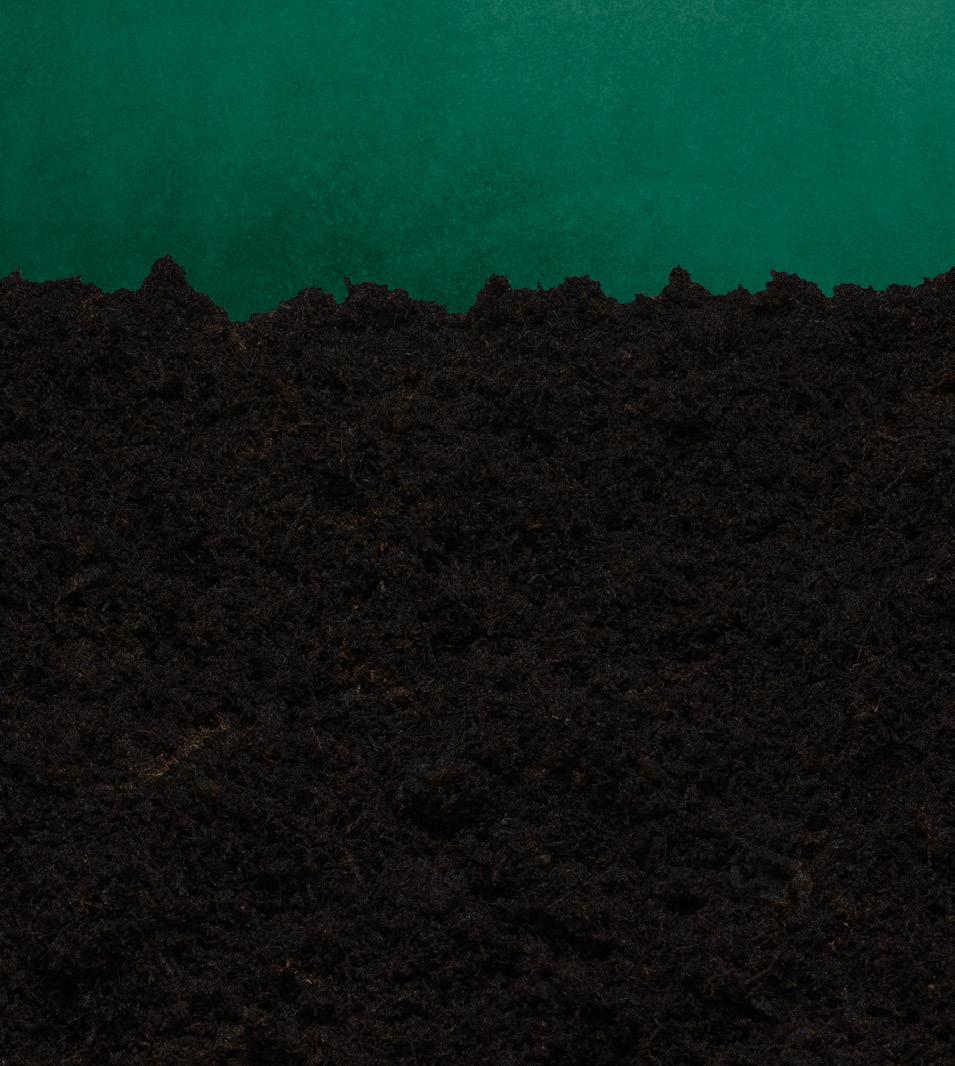
BEST OF BREED
World's leader in Mycorrhizal production
Decades of R&D

DYNOMYCO Spark's unique wettable powder formula is easy to use. It is designed for use as a drench or in irrigation systems with a filter size greater than 250μm (less than 60 mesh).



The app is handy for farmers pursuing organic certification, as it provides space to upload and store critical documentation such as receipts, seed purchases, and soil analyses
Are there limitations to what an app can do? This question was partly answered by a 2021 study conducted in southwest B.C. on the effective use of digital agricultural tools on food loss at the farm level [8]. Food loss generally describes food wasted throughout the production, post-harvest, or processing stages for reasons that include lack of market availability or crop loss due to climate shocks. Seven farmers in southwest B.C. were asked to use LiteFarm for two months and digitally record their harvest logs. The farmers found that the time it took to input and upload information to the app was a barrier to its use. However, one unexpected benefit did emerge. The app can better inform land use decisions when used for pre-harvest planning. The study concluded this benefit might help post-harvest loss using resources effectively.


As small-scale farmers worldwide are challenged by the conflicting needs to be productive while continuing to be ecological stewards of their land, apps can bridge the gap by giving them an extra hand in finding a balance that feeds a hungry planet and saves it from environmental oblivion.
“LiteFarm has been created as a public good, attempting to tackle the many socio-ecological dimensions of farming,” Trapp says. 3
Footnotes
1. Sara Cory - Sliabh Bearnagh Organic Farm (@ sliabhbearnafarm) • Instagram photos and videos
2. Our global food system is the primary driver of biodiversity loss (unep.org)
3. U.N. Report: Global hunger numbers rose to as many as 828 million in 2021 (who.int)
4. Community | LiteFarm (litefarm.org)
5. Home | CSFS at UBC Farm (ubcfarm.ubac.ca)
6. Slakes: A Free Smartphone App to Measure Aggregate Stability (soilhealthinstitute.org)
7. Who We Are – Digital Green (digitalgreen.org)
8. Farmer.Chat (digitalgreen.org)
9. Frontiers | Sustainability potential of app-based food loss measurement: Farmers’ perspectives in southwestern British Columbia, Canada (frontiersin.org)

BIO Jennifer Cole is a writer and garden enthusiast with a bachelor’s degree focused on history from Simon Fraser University, and a freelance writing career spanning two and half decades. Jennifer lives in Vancouver British Columbia. Her by-lines have regularly appeared in the opinion section of the Toronto Star and her portfolio includes articles in various newspapers, magazines, and websites across Canada. When not writing her own blog or visiting local garden centres, you can find her puttering, planting, and nourishing her own urban garden oasis.
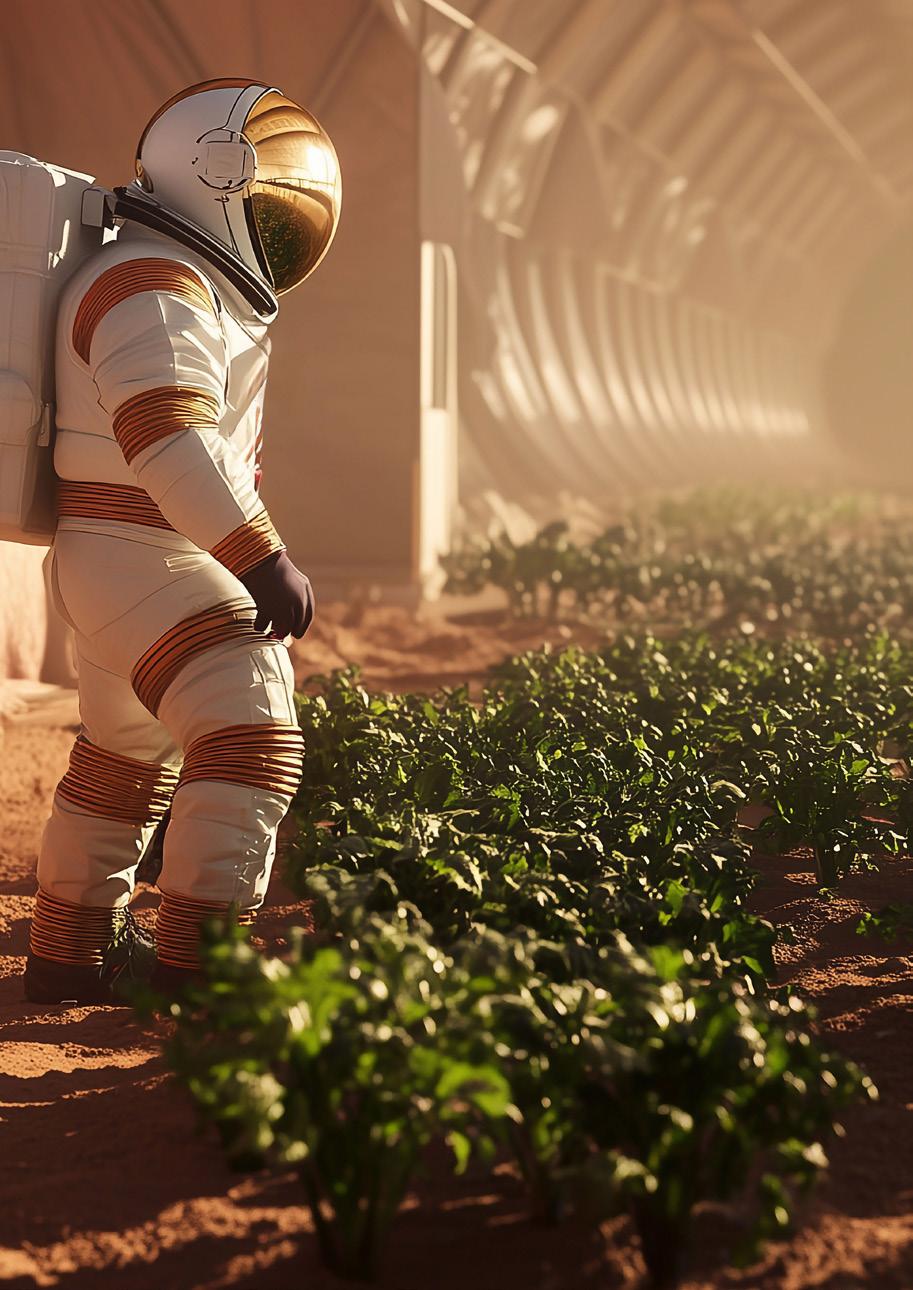
Growing food on the Red Planet won’t be easy. A summer day may reach 70°F (20°C) near the equator. However, at night, the temperature can plummet to -100°F (-73°C) [1]. That’s a little too chilly for tomatoes! As far as science can tell us, water will be scarce, and the soil has quantities of perchlorate, which can cause lung cancer in humans and inhibit plant growth. Going outside will be impossible without a space suit because of all the carbon dioxide in the atmosphere.

In Dinner on Mars, the reader is reminded not to
take food production on any planet for granted.
So, what’s for dinner? In their book Dinner on Mars, Lenore Newman and Evan Fraser look for the answer. Newman is the director of the Food and Agriculture Institute at the University of the Fraser Valley (UFV) in British Columbia. Fraser is the director of the Arrell Food Institute at the University of Guelph [2][3] Their book is not based on science fiction imaginings but on knowledge gleaned from food production here on Earth.

Dinner on Mars explores the future of food, with the authors suggesting that if we can figure out how to eat well on Mars, we can apply that knowledge and live more sustainably here on Earth, too.
“The technologies in the book are all either in a prototype stage or available at scale,” Newman says.
Newman and Fraser ask you to play along. As a new pioneer to the Red Planet, you arrive in 2080 at BaseTown, a gigantic biodome and the main population centre of Mars’ 10,000 residents. Finding the food court, you order salmon sashimi, toasted seaweed, a garden salad and a milkshake. The green salad was grown in hydroponic garden beds. Newman is currently researching vertical hydroponic farming at UFV [4]
“Here, in B.C., we rely on California for leafy greens,” she explains.
However, climate change, albeit drought or unrelenting rain in California, makes that food source unreliable. We need to grow our food, and vertical agriculture is something Newman thinks may be the answer. If the supply chain between
California and B.C. is unreliable, imagine the perils of one that stretches between Earth and Mars—140 million miles apart [5][6] . ‘Local food’ takes on a new meaning on Mars.
The milkshake you’ve ordered on Mars is not milk but a fermentation product. In some parts of the world, you can already find ice cream, milk, chocolate bars, cheese, and cream cheese made with animal-free dairy proteins. Cellular agriculture involves growing proteins or fats through a cell culture (growing and propagating cells) or fermentation (getting a microorganism to produce your compound of interest), which UVF has been researching.
Aside from fresh lettuce and synthetic milk, what other foods does Mars offer? In The Martian, Matt Damon grows potatoes to survive on the Red Planet. Are root crops even possible on Mars?
The answer lies in pond scum, cyanobacteria, to be more exact.
“It underpins the entire food chain,” Newman explains.
There is hope that genetically engineered microorganisms will gobble up the harmful perchlorate in the Martian soil, making it viable for growing root crops such as beets and turnips

On Mars, this microbe could become a hero. On Earth, over-fertilised fields and livestock operations often cause nutrients to run into waterways, causing cyanobacteria to form in giant mats of floating scum. Newman and Fraser highlight European experiments where researchers grew cyanobacteria in a series of stainless-steel tanks that simulated the Martian atmosphere. It grew well, fixing nitrogen (an essential component of healthy soil for healthy plants), producing oxygen, and leaving nutrient-dense organic matter behind. But that is only part of what this bacteria can do for Mars [7]
Scattered throughout the book are other nuggets of research that prove the impossible is possible. There is hope that genetically engineered microorganisms will gobble up the harmful perchlorate in the Martian soil, making it viable for growing root crops such as beets and turnips. So, after chowing down in BaseTown’s food court and scraping the organic matter off your plate into an elaborate composting infrastructure, you will feel confident that when you are offered mashed potatoes for dinner, they have been grown in good soil.
For Newman and Fraser, imagining life on Mars and writing a book was a fun distraction from the 2020 pandemic. However, they also make sure to land squarely back on Planet Earth. In the book’s final section, aptly titled “Upgrading the Operating System,” they suggest that by feeding a Martian city, we learn to feed ourselves better and how to use our resources here on Earth more efficiently.
The United States, for example, discards nearly 60 million tons of food every year that ends up rotting and emitting methane (a greenhouse gas more potent than CO2) in landfills [8] . The United Nations says inorganic fertilisers and livestock overgrazing cause soil degradation, compaction, erosion, and deforestation, affecting 34% of the world’s agricultural land [9].
As a new pioneer to the Red Planet, you arrive in 2080 at BaseTown, a gigantic biodome and the main population centre of Mars’ 10,000 residents
“One of the neat take-home lessons is that when you don’t have the plentiful resources you have on Earth, you really have to create ecosystems and closed cycles,” Newman says. “If we did [the same] on Earth, we could achieve some of our planetary goals like lowering our carbon footprint, making food cheaper and more plentiful, and less resource-intensive.”
Her final words of advice for Earthlings?
“Don’t take food systems for granted.” 3
1. What is the temperature on Mars? | Space (space.com)
2. Food and Agriculture Institute > Meet the Team | (UFV. ca)
3. Fraser, Evan | Geography, Environment & Geomatics (uoguelph.ca)
4. Distance to Mars: How far away is the Red Planet? | Space (space.com)
5. Food and Agriculture Institute > The Research | (UFV.ca)
6. The Research > Cellular Agriculture > Local Cellular Agriculture | (UFV.ca)
7. Enabling deep-space experimentations on cyanobacteria by monitoring cell division resumption in dried Chroococcidiopsis sp. 029 with accumulated DNA damage - PubMed (nih.gov)
8. Food Waste in America in 2024: Statistics & Facts | RTS (rts.com)
9. U.N. report: The world’s farms stretched to ‘a breaking point’» Yale Climate Connections (yaleclimateconnections.org)









Product Details
> 1000W Power






> Single channel - Full spectrum
> 10 bar system
> Ideal over a 1.5 x 1.5m area
> Built in dimmer
> 25% - 50% - 75% - 100% power
> Enhanced flowering with added red light
> Uniform light coverage
> Energy efficient, low heat output
> No fans or moving parts, silent running
> Easy one person set up
> 30’000 hour lifespan
> 3m power lead, plug and play
> Control multiple units with link cables
Spectral Graph


Technical Specifications

Product Code: 48891
Efficiency: 2.8 μmol/J @ 230 V AC

PPF (Photosynthetic Photon Flux): 2800 μmol/s
Diodes: White: SAMSUNG Red: San’an
Diode Quantity: 4800 White | 240 Red
LED Bars: 10
Dimensions: 1140 x 1185 x 69 mm
Light Distribution: 120°
Footprint: 1.5 x 1.5m
Dimming: Dimmer (on board) OFF-25-50-75-100%
Light Spectrum: Full Spectrum
CCT (Correlated Colour Temperature): 3418 K
Input Power: 1000W @ 230 V AC
Input Voltage: 220-240V AC 50/60 Hz
Power Factor: 0.98
Net Weight: 14.5kg
Lifetime: 30’000 hours
Environmental and Safety
IP Rating: IP65
Warranty: 2 years
Certifications: CE, UKCA, EMC, LVD

How can we be part of the solution when the simple act of eating supports an unsustainable food production model?
We live in a world where climate anxiety is real, and people often feel helpless or overwhelmed by the state of the environment. We keep hearing about how agriculture is one of the primary drivers of climate change, which is a tough pill to swallow because we have to eat. How can we be part of the solution when the simple act of eating supports an unsustainable food production model?
Rather than depend on technological advances or political leadership, Katin-Grazzini suggests we make a difference in our home kitchens daily
One of the things I’ve learned over the years about helping ease climate anxiety is to focus on the small, concrete actions you can take to help our current situation. For this reason, I was immediately drawn to Cathy Katin-Grazzini’s new cookbook, Love the Foods that Love the Planet . Katin-Grazzini wants to share the vital message that we can all lower our climate footprints by changing how and what we eat. She firmly believes that eating more plant-based foods, and shopping for and preparing meals more consciously are the most impactful moves we can make in our fight against climate change. Rather than depend on technological advances or political leadership, Katin-Grazzini suggests we make a difference in our home kitchens daily.
“Want to slash your individual climate footprint? It’s easy, it’s delicious, it’s super healthy, and it starts with your fork,” says Katin-Grazzini. “We all have the power to make choices that help cool the planet, and the time to act is now.”
Love the Foods that Love the Planet is beautifully photographed and features over 100 recipes in various categories, including homemade seasonings and sauces, appetizers, soups, salads, sandwiches, mains, side dishes, and desserts.
Karin-Grazzini reimagines traditional American classics like burgers, chillies, tostadas, and even Sloppy Joes into healthy, plant-based dishes. She also takes home chefs on a trip around the globe with recipes from Peru, Italy, India, West Africa, and more! The recipes feature climate footprint data so you can see the sustainability factor behind each meal.
Love the Foods that Love the Planet is available at most major bookstores and online. While you wait for your copy, we’ll get you started with a hearty soup perfect for the colder days ahead.

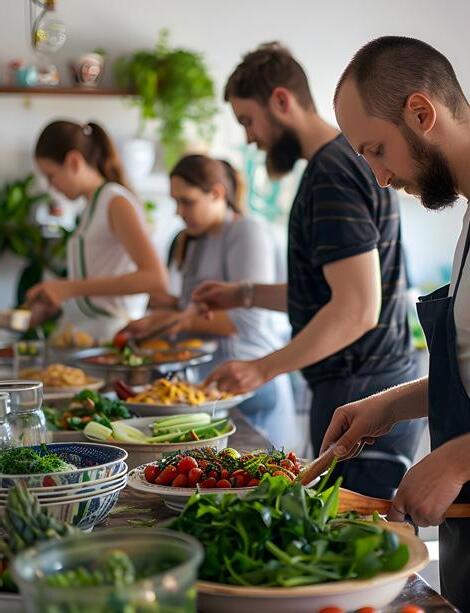

Here’s a delicious way to salvage the tough, woody ends of asparagus spears. They make an exquisitely flavoured velvety soup that whips up in minutes. We garnish it with chopped chives, a pinch of chilli threads, and some homemade whole-grain croûtons.
Asparagus Recoup Soup makes an elegant, delectable first course that smiles on the planet, is nourishing and com forting, and costs very little in time, effort, or ingredients. Using the ends of asparagus stems that normally get tossed in the garbage, Asparagus Recoup Soup is one creative and delicious way to reduce your stream of food waste, a ma jor driver of individual greenhouse gas emissions. While more assertive in flavour, recouping the stems of cauliflow er, broccoli, and hardy greens like kale or collards or the cores of cabbage heads also make very nutritious, tasty, and thrifty blended soups. Cook and season them similarly.
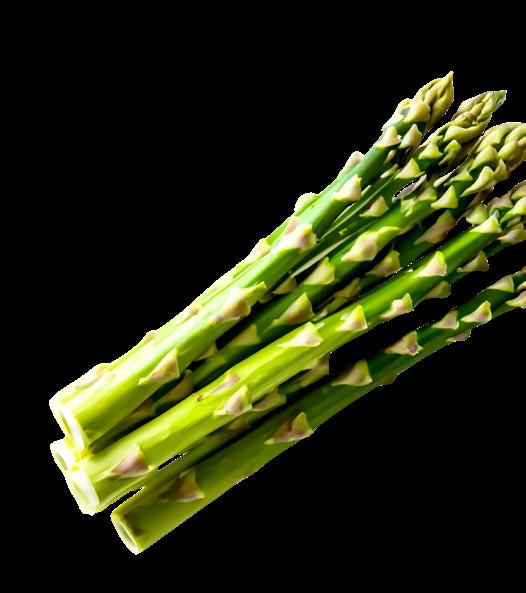

Prep time : 5 minutes to trim, plus 5 minutes to season and blend | Cook time: 5 to 20 minutes to cook stems, plus 5 minutes to reheat | Serves 2
Ingredients:
• 2 (2.25-pound) bags of fresh asparagus spears, lower woody sections only (tops reserved for another dish)
• 2 teaspoons nutritional yeast, or to taste
• ⅛ teaspoon fresh grinds of white pepper
• 2 tablespoons Shiro (mild, white) miso, or to taste, diluted in 1 tablespoon warm water to make a thick miso sauce
Garnishes:
• A few chives, finely chopped
• Several homemade croutons (recipe on page 113)
• A pinch of chilli threads or flakes
1. Break off the asparagus stems toward the bottoms to remove the tougher, woodier ends. Simmer in water for 5 to 20 minutes, depending on the stem’s thickness and woodiness. Cook until they are entirely tender when pierced with a knife.
2. Drain and reserve the cooking water. Transfer the stems to a high-speed blender. Puree them, adding only as much of the reserved cooking water as needed to create a smooth, velvety textured soup.
3. Season, using a light hand, with nutritional yeast and white pepper.

4. Before serving, reheat on the stovetop or for a minute, covered, in the microwave. Serve in warmed bowls, stirring in a spoonful of diluted miso, or to taste. Garnish with chopped chives, warm croutons, and if you like, a pinch of
Catherine is a Canadian award-winning journalist who worked as a reporter and news anchor in Montreal’s radio and television scene for 10 years. A graduate of Concordia University, she left the hustle and bustle of the business after starting a family. Now, she’s the editor and a writer for Garden Culture Magazine while also enjoying being a mom to her three young kids. Her interests include great food, gardening, fitness, animals, and anything outdoors.
This recipe excerpt is from Cathy KatinGrazzini’s new book, “Love the Foods That Love the Planet.” Reprinted with permission from Health Communications, Inc.
The fastest way to make croûtons, of course, is to repurpose stale artisanal whole-grain bread or to toast a slice of fresh bread. Then rub it with a clove of garlic and season with fresh grinds of pepper and perhaps a sprinkle of dried thyme leaves.
But, if you are out of bread, here’s a tasty surrogate that’s simple to make from a quick dough using whole-grain breadcrumbs and potato, seared on a hot, nonstick skillet.
Prep time: 5 minutes | Cook time: 5 minutes | Makes 15 to 25 croutons, depending on size
• ⅔ cup coarse whole wheat bread crumbs
• 3 teaspoons arrowroot
• 1 teaspoon nutritional yeast
• Several grinds of white or black pepper
• 1/4 teaspoon granulated garlic
• 1/4 teaspoon granulated onion
• 1/2 teaspoon dried herbes de Provence or dried thyme leaves
• 1 teaspoon shiro (mild, white) miso paste, or to taste
• 1 medium yellow potato
1. Mix the bread crumbs, arrowroot, nutritional yeast, pepper, garlic, onion, herbs, and miso paste in a bowl. Taste and adjust the seasonings, then mound the mix on a large cutting board.
2. Cook the potato in a microwave for 3 to 4 minutes until tender.
3. While the potato is piping hot, cut it in half, and, using a ricer, squeeze two-thirds of the riced potato pulp onto the bread-crumb mix. Use a fork to distribute the potato throughout the mixture and then use your hands to knead it for a minute into a dough. Add more of the riced potato if the mixture remains too crumbly to gather cohesively.
4. Use a wooden dowel or light rolling pin to flatten the dough to 1/4 inch in thickness.
5. Use a straight edge or ruler to square the edges. Cut them into bite-sized 1-inch squares or 1-by-¾ -inch rectangles.
6. Heat a nonstick pan for 3 minutes over medium heat. Toast the croutons for about 2 minutes on each side, lightly browning them.
7. Serve immediately, or if you prepare them in advance, reheat the croutons before serving in a 300°F oven for 5 minutes. 3

California is taking a significant step toward reducing food waste. The US state recently signed a bill standardising food date labels and eliminating the ‘sell by’ date on products. Assembly Bill 660 aims to clear any confusion consumers might have about the shelf-life of their food by allowing only two categories. Beginning in July 2026, there will be a “Best if used (or frozen) by” date to indicate peak food freshness or quality and a “use (or freeze) by” label for food safety. Consumers may still notice a “packed on” date on food products, but only if accompanied by the above new labels.
It’s easy to understand why people are so confused by food labels; this law consolidates more than 50 terminologies typically found on packaged foods! A 2022 study published in The Journal of Agriculture and Food Research found that 75% of American respondents associate date labelling with food safety and worry it’s unsafe to eat a product that has passed the date on the labels. When asked if food date labels are a determining factor when buying a food product, 88% answered yes. The results are no surprise; the United Nations Food and Agriculture Organisation says that food waste from households, retailers, and restaurants totals 931 million tons annually, 570 million tons of which occurs in homes.
Many other initiatives strive to reduce global food waste and offer consumers concrete ways to do it. Too Good To Go (toogoodtogo.com) is an app that connects people with local restaurants, cafes, grocery chains, and bakeries with surplus food to sell at the end of the day. The products are still safe to eat but are sold for half the price or less! The social impact company also offers “Look-Smell-Taste” labels to product brands worldwide so that people can learn to trust their senses rather than fall victim to misleading “best before” dates. This initiative is already active in 14 countries and counting. With 100 million registered users worldwide and 170,000 business partners, Too Good To Go estimates it’s helped save 350 million meals from landfills. Download the app today to see what affordable goodies are available in your neighbourhood!
It’s easy to understand why people are so confused by food labels; this law consolidates more than 50 terminologies typically found on packaged foods!
For those who would rather ditch the apps and shop the old-fashioned way, many stores have made it their mission to sell food that has passed the “best before” dates. In Quebec, Canada, an incredible business model called “Liquidation Marie” (facebook.com/Liquidationmarieinc) sources surplus products from grocery chains and sells them at a deep discount at its four locations throughout the province. Customers can purchase canned goods and other pantry staples, as well as fruits, veggies, meats, and cheeses that have not quite reached expiry and are still fit for someone’s dinner plate!
Sources:
• California Bans ‘Sell By’ Dates to Simplify Labels and Cut Food Waste - Food Tank - rebrand.ly/dc1224
• Understanding and addressing food waste from confusion in date labelling using a stakeholders’ survey - Journal of Agriculture and Food Research doi.org/10.1016/j. jafr.2022.100295.

The social impact company also offers “Look-Smell-Taste” labels to product brands worldwide so that people can learn to trust their senses rather than fall victim to misleading “best before” dates.


LED grow lights have made serious headway over the past decade, quietly but firmly establishing themselves as indispensable in indoor horticulture. Their rise is owed to many factors: efficiency, versatility, and their ability to mimic the visible portion of the solar spectrum. In this article, we’ll chart the path LEDs have taken from niche to necessity, examining their role in indoor gardening from 2015 to now, casting an eye to the horizon for what’s to come. It’s worth noting from the outset that our focus here is strictly on indoor grow environments, leaving the topic of greenhouse supplementation for another day.
LED grow lights moved from an overhyped technology to a standard in indoor cultivation. In the early years, they were often advertised as the silver bullet for all lighting woes
Between 2015 and 2023, LED grow lights moved from an overhyped technology to a standard in indoor cultivation. In the early years, they were often advertised as the silver bullet for all lighting woes. Manufacturers focused on narrow spectra—blue and red—under the assumption that these were the only colours plants needed for photosynthesis. This era gave us the now-infamous blurple lights: aggressive in their hues and equally aggressive in their marketing. They promised better yields than HPS at a fraction of the energy cost. However, many early adopters quickly felt the sting of reality. Many early LED fixtures simply couldn’t match the penetration power or output of legacy systems like HPS or MH lamps. Yields dipped, and growers, especially those accustomed to the heat, intensity, and reliability of HPS, were disappointed.
However, time has a way of smoothing out the rough edges, and as LED diode technology improved, so did the attendant fixtures. By 2017, photon efficacy—the measure of how efficiently a light turns electricity into plant-usable light—had surpassed 2.5 μ mol/J, outperforming even the most efficient double-ended HPS systems. Companies like Samsung, OSRAM, and Cree pushed the boundaries of LED efficacy, and suddenly, LEDs were a viable, albeit costly, alternative.
More importantly, there was a fundamental shift in how LEDs delivered light. Instead of relying solely on red and blue, manufacturers introduced full-spectrum white LEDs, better mimicking natural sunlight. Plants began to thrive in ways growers hadn’t seen with the earlier purple fixtures. Phosphor-converted “white” LEDs turned out to be the key to unlocking robust growth across all stages, and growers looking to optimise terpene and flavonoid profiles finally saw the promise realised.
By 2020, the standard form factor for LED grow lights had shifted dramatically. The bar-style fixture—also known as a multi-array—became the go-to design for high-intensity growing environments. Models like the Fluence SPYDR and Gavita Pro 1700e dominated the scene, offering superior light distribution across the entire canopy. While these lights were great for those with restricted vertical space and multi-tier set-ups, the form factor wasn’t without detractors. Critics pointed out the lack of penetration power compared to HPS. As a result, growers had to adjust their techniques: subcanopy leaf stripping, higher plant counts, and more diligent canopy management became more common practices.
Another wrinkle emerged: LEDs run cooler than HPS, and while this was initially seen as a win for energy savings, it presented challenges in cooler climates. Traditional HPS lights convert up to 70% of their energy into heat, a valuable byproduct for growers in cold regions. In contrast, LED fixtures only convert 20-30% of their energy into heat, meaning many growers needed to invest in supplemental heating to maintain optimal growing conditions. This threw considerable cold water on the initial excitement surrounding the potential energy savings of LEDs.
Fast forward to today, and the LED grow light market is flush with options. The best lights are incredibly efficient, with photon efficacies regularly exceeding 3.0 μmol/J. One of the most soughtafter diodes is Samsung’s LM301H Evo. Many growers ask for it by name. Chinese manufacturers have responded to the demand, offering 700W bar-style fixtures with Samsung diodes for between $200 and $400 per unit when purchased in bulk. The market is flush with high-quality, affordable options.
Top-tier lights like the HLG Scorpion Diablo and Fluence SPYDR 2i push out between 1,700 and 1,900 µmol/s—perfect for growers seeking high light intensities during the flowering stage. These lights, boasting full-spectrum output, excel not only in biomass production but also in enhancing secondary metabolites such as terpenes and flavonoids.
However, not all advancements in LED grow lights are received with open arms. Tunable spectrums—where the balance of red, blue, and sometimes UV or infrared light can be adjusted—have become more common in high-end fixtures. For example, the California Lightworks SolarSystem 1100 and Dimlux Xtreme offer such functionality. This seems like a helpful feature on paper for many growers, but it’s not always a game-changer in practice. Some argue it adds unnecessary complexity and cost without delivering proportional yield or crop quality gains.
Heat remains a common concern. While LEDs run cooler than their HPS counterparts, they’re not entirely heat-free. Highoutput fixtures in sealed grow rooms still necessitate active cooling systems. Passive cooling is standard in most modern LED fixtures. Still, growers must often manage heat carefully, especially in smaller setups in the warmer months or when running lights at maximum intensity. Conversely, growers often need to use supplemental heating in the cooler months.
Manufacturers must prioritise eco-friendly materials and recyclable designs, especially as more growers seek out longer-lasting, durable fixtures that don’t contribute to mounting e-waste
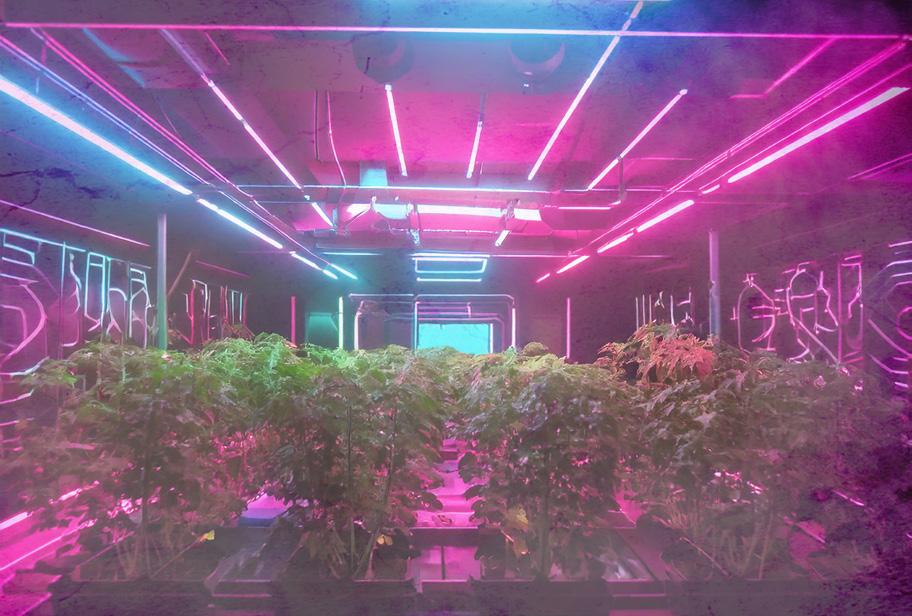
The future of LED grow lights looks bright—literally and figuratively—but it’s far from perfect. One of the most exciting prospects is dynamic spectrum control. Imagine a setup where sensors monitor plant health and environmental conditions in real-time, automatically adjusting the spectrum to optimise growth. It’s an exciting vision made possible by advances in AI and the Internet of Things (IoT). While these systems may prove invaluable for large-scale commercial operations, the practicality for smaller or medium-sized growers remains questioned. High upfront costs and added complexity might limit adoption in more modest setups.
Another innovation on the horizon is quantum dot LEDs. These diodes promise even more precise control over wavelengths while offering improved efficiency. Quantum dots emit highly specific colours when exposed to light and, in theory, could allow growers to fine-tune their lighting setups with unparalleled precision. However, this technology is still in the experimental phase, and it’s unclear when—or if—it will become a commercial reality for indoor horticulture.
As energy efficiency continues to improve, the real challenge may lie not in producing light but in managing the environment. In colder climates, LEDs’ low heat output is a double-edged sword. While it reduces the need for cooling, it often necessitates more heating. As energy costs fluctuate, growers may find themselves carefully balancing lighting efficiency with HVAC expenses.
One possible solution to these challenges may come from further experimenting with side lighting and under-canopy lighting. Bar-style fixtures often struggle with penetration, and supplemental lighting at different angles could help mitigate this shortcoming. Companies like Fluence are already exploring this concept, but much remains to be seen about its scalability and cost-effectiveness. Look out for versatile multi-array LED lighting fixtures where bars can be individually moved from a top-lighting position to a side-lighting position.
Finally, as LEDs age in the field, sustainability will become a bigger focus. Manufacturers must prioritise eco-friendly materials and recyclable designs, especially as more growers seek out longer-lasting, durable fixtures that don’t contribute to mounting e-waste.
There’s no doubt that LED grow lights have transformed indoor horticulture in the last decade. They offer unprecedented control over light intensity, spectrum, and efficiency, but challenges remain—particularly around heating, cost, and light penetration. The next frontier might be quantum dot LEDs, dynamic spectrum control, and smart systems, but the industry still has hurdles to clear. For now, though, LEDs have rightfully earned their place as the lighting solution of choice for indoor growers. 3





BY DUSTAN MCLEAN

In December 2020, my business partner handed me a research paper sent to her from a grower/researcher in Quebec named Sylvain Gaudreau. I had no idea how much of an impact Sylvain and his work would have on me and my approach to propagation in commercial growing facilities. The paper was about a propagation technique that augments a crop’s yield.

In commercial cultivation, plants are typically propagated through cuttings – a process known as cloning. Many producers use techniques like topping or ‘fimming’ to stimulate the growth of axillary shoots, which increases the number of flowers per plant and, consequently, the overall yield. Topping or fimming is usually done after the cuttings have been in rooting media for about two weeks.
Sylvain and his team tested a new approach to boost shoot development per plant. This method involves topping the mother plant(s) before taking cuttings for cloning, with the cuttings collected one week after the topping. This modification results in faster development of the axillary shoots and reduces the time from cutting to harvest by 7-10 days. This new method requires only minor adjustments to the existing workflow and yields similar results to the standard topping procedure – but it shortens production time by nearly two weeks because the plantlets do not need to recover after topping. This approach leads to faster growth and improved overall productivity.
Since the technique is being performed on the mother plant(s), there is a much larger and more robust root system to work with. Within that system lies all of the growth hormones. Topping/fimming stimulates the plant’s survival mechanism.
With the mother in a panicked state, the plant takes all of those growth hormones and distributes them throughout the plant – this creates new apexes to replace what has been removed. Here’s where the genius of Mother Nature comes in – the plant won’t create just one apex, but multiple apex shoots to ensure its survival. With the mother plant growing under stable and favourable conditions – and not in the wild – all new growth will survive, resulting in cuts with multiple apex clones that are charged with more growth hormones than conventionally taken clones.
This technique gives the grower pre-topped clones that will have multiple apexes. This eliminates the need for topping once the plantlet leaves propagate, saving the operation 7-10 days of production per crop and a faster time to flipping/kicking the plants into flower. This technique increases yield, gives better uniformity to the canopy, and, most importantly, faster cloning time –which has been the most exciting aspect of early topping (for me!). The cuttings seem to root much quicker than traditionally taken clones. We saw ‘fish bones’ (the start of rooting) within 3-5 days, and our clones were ready for transplant in 10 days, which helped increase our production and the number of crops we could grow in a calendar year.

In the years following Sylvain’s research, it has been discovered that the technique works on most plants that produce flowers. The tobacco industry uses it, as do marigolds (a paper is currently being written on this). The Early Topping Technique is being performed on hemp plants used to scrub the soil around the Joseph V. Stalin nuclear power plant.
In China, cultivating small peas in a vertical growing environment using prolonged periods of light in conjunction with ETT has increased yield tenfold. The Chinese researchers growing the peas published a paper based on their findings and Sylvain’s work.
The Vatican has even downloaded Sylvain’s paper to their horticulture archives for further research. As of the writing of this article, the paper has been downloaded 100,000 times in 102 countries. It has also been tested on over 3000 cultivars with a 100% success rate and has been proven to work commercially in numerous agricultural operations.
As a grower, I want the highest product quality and yield. The Early Topping Technique gives my operations the best chance at achieving those goals. I can’t thank Sylvain enough for his research and time teaching my team about it. If you’d like to read the study, please see the link:
rebrand.ly/toppingstudy 3


Topping or fimming is usually done after the cuttings have been in rooting media for about two weeks
With 30 years of cultivation experience, Dustan has dedicated a good portion of his life to medicinal plants. He was a founding partner and Head of Cultivation/Master Grower for Parkland Flower Inc. He is now the Head of Cultivation and Master Grower for Big League Cultivation in Alberta, Canada. He provides incredible genetics to Canadian producers and selected flower and concentrates for the international market. He is also a cultivation consultant with Chief Grow Officer Consulting. He is currently working on several projects, including developing a cultivar to help with opioid addiction and a drought-resistant variety.
Adding edible flowers to meals may be a novel concept for most gardeners. However, if you’re willing to experiment, many flowers offer delicious and nutritious foods


and other flower

ost food gardeners know how to use the produce they grow, but relatively few use the edible blooms in their gardens as a food source. Adding edible flowers to meals may be a novel concept for most gardeners. However, if you’re willing to experiment, many flowers offer delicious and nutritious foods.
These are a few of the advantages of growing and using edible blooms:
Flowers contain pollen, a source of proteins, carbohydrates, saturated and unsaturated lipids, carotenoids and flavonoids (1). One study (2) found “the flower species with the highest mineral content were chrysanthemum, dianthus, or viola”, and these varieties surpass many fruits and vegetables. According to this study, flower nectar consists of “a balanced mixture of sugars, amino acids, proteins, inorganic ions, lipids, organic acids, phenolic substances, alkaloids and terpenoids”. Petals and other flower parts contain vitamins, minerals and antioxidants (1). Interestingly, the colourful pigments in the flower petals designed to attract pollinators also contain high concentrations of antioxidants (4)
Many studies confirm the antioxidant activity and bioactive compounds of edible flowers. Many species are antimicrobial, but each variety has unique phytochemicals and specific biological health benefits. For example, roses (Rosa sp.), nasturtiums (Tropaeolum majus, Tropaeolum minus) and chrysanthemums (Chrysanthemum x morifolium, Dendranthema x Grandflora) have anticancer compounds; calendula (Calendula officinalis) is anti-inflammatory and regulates menstruation; and borage (Borago officinalis) can treat asthma, bronchitis, cramps and kidney ailments. Edible blooms are also rich in potassium, which prevents cardiovascular diseases (1). This is just a glimpse into the wealth of health benefits reported in scientific literature.
Fresh, dried or cooked flowers add texture, aroma and flavour to meals, herbal teas, and drinks.
Adding colourful edible blooms as a garnish to meals makes them more visually appealing.
Many herbs, vegetables, and ornamental plants bloom in our gardens with edible flowers that attract bees and predatory insects. These improve crop yields and assist with pest management. Edible flowers also provide a food source for insects and nectar-eating birds.
The floriculture industry is booming, and there is a growing interest in providing edible flowers to chefs, restaurants, cake makers, and the wedding market. Over the past few years, I have spent time with three local flower farmers who specialise in growing edible petals commercially. Caz Owens, owner of Organica Floret, Australia’s first certified chemical-free edible flower farm, uses sustainable and bee-friendly growing methods with over a hundred varieties. Her farm takes an integrated pest management approach, and it’s a sensory delight to visit. While there, I discovered some keys to growing a safe product for home gardeners or growers interested in joining this industry.
All edible flowers should be grown organically. Growers may need to consider where they locate their plants if neighbours use herbicides or pesticides to avoid accidental contamination. Plant labels are also important.
If you’re aiming to grow commercially or even starting to eat edible blooms in a home garden, differentiate any non-edible varieties. Avoid planting them near edible blooms to minimise the risk of harvesting by mistake. Some look-alikes can be toxic! A few common poisonous flowers to steer clear of are irises (Iris sp.), sweet peas (Lathyrus odoratus), frangipani (Plumeria sp.), foxgloves (Digitalis purpurea and species) and daffodils (Narcissus sp.). Be intentional about selecting the suitable species if choosing to grow your own. That includes starting with organic seeds.
To optimise colour, flavour, and nutrient value, grow in healthy mineralised soil and maintain consistent moisture and mulch levels. I treat my edible flowering plants like any fruit, herb, or vegetable. I want to give them the best soil and growing conditions to produce healthy, delicious blooms.
Avoid eating all flowers that may be contaminated with pesticides or herbicides. Don’t:
• Wild harvest flowers from parks and roadsides.
• Consume blooms from florists.
• Eat conventionally grown flowers from any source, such as nurseries or garden centres.


Nasturtiums add colour flavour and nutrients as an edible garnish
Variety of edible flowers, garnishing salad, borage, nasturtium, society garlic, citrus
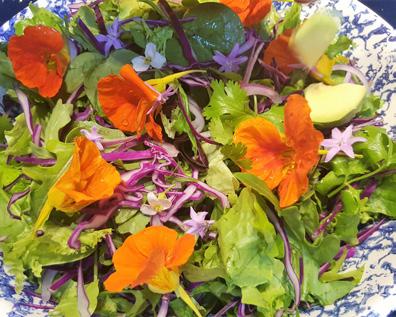
Many herbs, vegetables, and ornamental plants bloom in our gardens with edible flowers that attract bees and predatory insects
While we enjoy many edible vegetable flowers, there are a few to avoid. Don’t eat flowers from vegetables in the Solanaceae family, including eggplant, tomato, capsicum and potato.
When first eating edible flowers, try adding one or two varieties in small quantities to your diet and research each species. Some people suffer from allergic reactions. Those with asthma or hay fever may be sensitive to pollen, so remove this from any flowers before eating.
Aim to harvest in the early morning, when the plants are freshest, and the natural flavours are highest. I’ve found it’s best to wait until the dew dries, as it can cause flowers to stick together.
I take a shallow tray or plate out into the garden and use scissors to snip the flowers from each plant. I add them in a single layer to avoid damage, making it easy to check for insect hitchhikers! This is the best time to remove pollen, stamens, stems or sepals/calyx from some flowers as they are bitter or may contain allergens. For example, Chinese Lanterns (Abutilons) have a long stamen and a lot of pollen. I snip this off and remove the sepals below the flower so just the crisp lettuce-flavoured petals remain. This perennial is a favourite of mine to use in salads.
This varies from whole flowers to just petals, depending on the species. Cathy Wilkinson Barash, author of ‘Edible Flowers – From Garden to Palate’ confirms only the petals of some flowers are edible, such as the rose (Rosa sp.), calendula (Calendula officinalis), chrysanthemum (Chrysanthemum x morifolium, Dendranthema x Grandflora) and lavender (Lavandula multifida, Lavandula stoechas, Lavandula angustifolia).
She advises, “When using just the petals, separate them from the rest of the flower just prior to use to keep wilting to a minimum. Others, including Johnny-jump-up, violet, runner bean, honeysuckle, and clover,

can be eaten in their entirety. Roses, dianthus, English daisies, marigolds and chrysanthemums have a bitter white portion at the base of the petal where it was attached to the flower.”
Once harvesting is completed, the next critical step is to move the flowers into an airtight container and quickly chill them at -2.5 to 4°C. Low temperatures help preserve the blooms and stop enzymes from destroying them, extending their shelf life.
Washing all blooms is unnecessary as some are delicate, and petals can easily bruise. If you do a visual check for insects during and after harvesting, a light brush of the petals with a pastry brush or a quick swirl in cold water for a few seconds may be all that’s needed. Water-soluble nutrients are lost if soaked for too long. The health benefits of the bioactive compounds are preserved when the flowers are eaten fresh or with minimal post-harvest processing (5)
Freshly picked edible blooms retain their nutrients and tend to last 7-14 days, but many for much longer if stored properly at the correct temperature. Linda Brennan, author of ‘A Delicious Bunch’ and commercial edible flower grower, notes that some varieties have special needs: “Edible ginger flowers keep 3-5 days in good condition without refrigeration, sitting in a vase of fresh water.” She advises to “stockpile larger flowers for a few days, cut fresh new buds with stems, put them straight into a vase of cool water and place them in a cool spot.” They may need refrigerating in hot weather.
Some edible flowers, such as chicory and daylilies, last only one day, so their open flowers are best picked the same morning. Sunflowers are also unique! To avoid the flowers closing, position them close to light unless harvesting and storing the petals only.
If drying petals or flowers for later use, they are best stored in an airtight container in a refrigerator. Alternatively, store them in a cool, dry location away from strong light that may fade blooms.

OPTIMISED FOR LED SPECTRUM MAXIMISE UPTAKE ENHANCE POTENCY


VBX, a nutrient developed to compliment the LED spectrum. Combining the power of multiple bottles in one complete powder for optimum results.



Dried chamomile flowers are used to make herbal tea
Harvesting male zucchini flowers to cook with

These are a few ideas for incorporating these delicious beauties into food and drinks:
• Add colour, flavour, and texture to salads or as a raw garnish to highlight a dish.
• Stuff large zucchini flowers with savoury fillings.

• Make medicinal floral teas such as Cranberry hibiscus (Hibiscus acetosella), German Chamomile (Chamomilla recutita), and Roman Chamomile (Chamaemelum nobile) tea. Vibrantly coloured dried Blue Butterfly Pea (Clitoria ternatea) flowers are a popular choice for tea.
• I infuse calendula petals in carrier oil to make a soothing, healing, anti-inflammatory, anti-bacterial, and anti-fungal salve for the skin.
• Sweet desserts and remedies.
• My savoury favourites are nasturtium butter and chive (Allium schoenoprasum, Allium tuberosum) blossom butter. Both are delicious spread on bread or crackers or drizzled over cooked vegetables.
• Infuse sweet-flavoured petals like roses into honey or add them to fruit jellies, cordials and jams.
• Floral ice cubes and drink garnishes [See pic of my edible flower ice cubes].
• Floral vinegar and infused oils help preserve many edible blooms’ flavour and nutritional properties.
• Biscuits, muffins and cakes. I often use fresh petals to decorate or flavour these baked goods.
• Dried, pressed, or crystallised petals add flavour and colour to decorate wedding cakes, desserts, cupcakes, cheese boards and grazing tables. 3
Lilac flowers used to flavour orange jam
Some edible flowers, such as chicory and daylilies, last only one day, so their open flowers are best picked the same morning
References:
1. ‘Edible flowers: A review of the nutritional, antioxidant, antimicrobial properties and effects on human health’. Journal of Food Composition and Analysis, 2017, Vol 60, p38-50.
2. ‘Edible Flowers — A New Promising Source of Mineral Elements in Human Nutrition’. Molecules. 2012; 17(6):6672-6683.
3. ‘Potential health enhancing properties of edible flowers from Thailand’. Food Research International. May 2012; 46(2):563-571.
4. ‘The Biodiversity of Edible Flowers: Discovering New Tastes and New Health Benefits’. Front. Plant Sci., 22 February 2021, Sec. Crop and Product Physiology, Volume 11 – 2020.
5. ‘A Review on the Journey of edible flowers from farm to consumer’s plate’. Applied Food Research. 2023; Volume 3, Issue 2, 100312.
Anne Gibson, The Micro Gardener, is an author, speaker and urban garden community educator on the Sunshine Coast, in Queensland, Australia. Anne is passionate about inspiring people to improve health and wellbeing, by growing nutrient-dense food gardens in creative containers and small spaces. Anne regularly presents workshops, speaks at sustainable living events, coaches private clients and teaches community education classes about organic gardening and ways to live sustainably. She has authored several eBooks and gardening guides. Anne shares organic gardening tips and tutorials to save time, money and energy on her popular website - TheMicroGardener.com


Everest Fernandez explores the science and practical considerations relating to “dry-back”.
Dry-back” has become quite the buzzword recently. (Don’t believe me? Just look at Google Trends!)
This advanced irrigation strategy allows the root zone to dry slightly between watering sessions— especially overnight—introducing enough water stress to coax plants into higher production. When done right, dry-back can enhance plant growth, increase yields, and boost the production of secondary metabolites like terpenes and flavonoids. (Ooh, now I’ve got your attention!) But make no mistake: it’s a delicate dance that requires precision and a solid understanding of your growing environment.
Unlike conventional irrigation methods that aim to keep the root zone consistently hydrated, dry-back allows for controlled moisture reduction, particularly during the respiration phase in the dark period. This temporary stress triggers physiological responses, including the production of abscisic acid (ABA), a hormone that helps conserve water by closing the plant’s stomata. While ABA’s role in water retention is crucial, subsequent metabolic shifts—such as the activation of secondary pathways and oxidative stress response— increase the production of compounds like flavonoids, terpenes, and other phenolics. For growers of tomatoes, peppers, and other flavour-forward crops, dry-back can dramatically improve aroma, taste, and therapeutic qualities.
Dry-back isn’t for everyone. To dry-back or not to dry-back depends on your skill level and—just as crucially—on the growing media used. Different substrates hold and drain water differently, making or breaking your dry-back efforts. So, it pays to do your homework first. (And, by reading Garden Culture Magazine, that’s precisely what you’re doing!)
1. Stone Wool (Rockwool): Stone wool is top of this list for a reason. It offers precise control over root zone moisture thanks to its excellent aeration and rapid drying between waterings. This makes it a top choice for dry-back, especially in smaller grow blocks that allow for tighter control and quicker wet/dry cycles. Many growers swear by it for its reliability in supporting root health and preventing waterlogging.
2. Coconut Coir: Coir strikes a good balance between water retention and aeration, although it holds more water than stone wool. If you’re using a 70/30 coco-perlite mix, you’ll get superior drainage, which supports dry-back techniques. However, coir’s higher cation exchange capacity (CEC) can complicate nutrient management, so keeping an eye on electrical conductivity (EC) is crucial to avoid imbalances. As always, check your run-off regularly to prevent salt build-up!
3. Hydroton Expanded Clay Balls: Hydroton is a go-to for its low water retention and excellent drainage, making it a solid choice for dry-back. Just be aware that it dries out faster than other substrates. A well-calibrated drip irrigation system, based on dripper rings paired with moisture sensors, is crucial in preventing root desiccation while maintaining controlled drought stress during dry-back cycles.
This advanced irrigation strategy allows the root zone to dry slightly between watering sessions— especially overnight—introducing enough water stress to coax plants into higher production
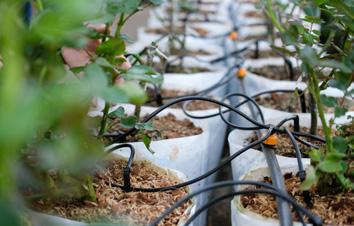
4. Perlite: Perlite is another great option, particularly when used as part of a mix. Its fast drainage and aeration properties make it well-suited for controlled drought stress. Plus, its inert nature means it won’t interfere with your nutrient solution, giving you complete control over feeding.
Not all hydroponic systems are ideal for dry-back. Precision in water control is essential to ensure your plants get the right amount of stress at the right time.
• Drip Irrigation Systems: Drip systems are the gold standard for dry-back. They allow for precise delivery of water and nutrients directly to the root zone, making it easier to adjust irrigation frequency and duration. Embedding moisture sensors in the root zone further fine-tunes this process, helping you maintain consistent dry-back conditions.
• Ebb and Flow Systems: Ebb and flow systems can work, but they don’t offer the same level of precision. The uniform flooding and draining make it trickier to control moisture levels. However, you can still manage a successful dry-back with some creative tweaking—like adjusting flood cycles and using moisture sensors.


Mastering dry-back techniques is a powerful tool for growers aiming to optimise their crop’s secondary metabolite production while enhancing water-use efficiency
Mastering dry-back takes some skill (real-time water content and root zone EC data help enormously!), but with a few key practices, you’ll be well on your way to reaping the rewards.
• Monitor Water Potential: Using tensiometers or water content sensors like GroSens is highly recommended. This allows you to strike the perfect balance between too much and too little water stress, ensuring the plants experience mild, beneficial stress without tipping into damaging drought conditions.
• Dial in Irrigation Scheduling: Tailor your irrigation schedules to the plant’s growth stage. During the vegetative phase, plants typically need more frequent watering to support rapid growth. But, during the flowering or fruiting stages, extending dry-back periods can boost secondary metabolite production. Dry-back really shines during the transition and flowering phases.
• Manage Nutrient Concentrations: Nutrients become more concentrated as the root zone dries. To avoid nutrient burn, reduce nitrogen levels during dry-back phases and increase potassium to support flower and fruit development. Switching from grow to bloom nutrient formulations helps to manage this shift seamlessly.
• Start in Transition: Implementing dry-back techniques as your plants move from vegetative growth to generative production can help mitigate unhelpful vertical stretch, making your plants easier to illuminate efficiently during flowering. The drier conditions in the root zone serve as an additional signal for the plant to focus on flowering rather than growing taller.
Even seasoned growers can make missteps when applying dryback. Here are some of the most common issues—and how to avoid them.
• Over-Drying the Root Zone: One of the biggest mistakes is letting the root zone dry out too much. Prolonged drought stress can damage roots, stunting growth and reducing yields. It’s all about finding the sweet spot: mild stress, not extreme dehydration.
• Inconsistent Irrigation: If your irrigation is inconsistent, your plants won’t know what to expect, leading to erratic growth patterns. Keeping a regular, precise schedule is vital to effective dry-back.
• Overlooking Environmental Factors: External conditions like temperature, humidity, and light intensity affect how fast your plants dry out. Adjusting irrigation based on these variables is crucial to keep things balanced.
When plants experience controlled drought stress, they actively kick into high gear. The production of ABA signals stomata to close, so dryback is more of a nighttime thing. It reduces water loss and shifts the plant’s energy toward defence and reproduction. This, in turn, triggers secondary metabolic pathways, increasing the production of valuable compounds like flavonoids, terpenes, and cannabinoids.
As water availability decreases, plants undergo osmotic adjustment by accumulating solutes like proline and sugars to help retain water. They also develop deeper roots to access moisture from deeper substrate layers. These physiological responses boost the plant’s overall resilience while enhancing the production of the compounds we value most.
Controlled drought stress can significantly enhance a plant’s natural chemistry:
• Flavonoids: These compounds, known for their antioxidant and UV-protective properties, increase under stress. This results in better flavour, deeper pigmentation, and higher nutritional content, particularly in fruits like tomatoes and peppers.
• Terpenes: In aromatic plants, dry-back can surge terpene production, intensifying the scent and flavour. Terpenes also serve as the plant’s natural defence mechanism.
Under drought stress, plants produce reactive oxygen species (ROS), which can cause cellular damage if left unchecked. However, moderate levels of ROS act as signalling molecules, stimulating the production of secondary metabolites. Plants respond by ramping up their antioxidant defences, which help neutralise excess ROS while enhancing metabolite synthesis.
Mastering dry-back techniques is a powerful tool for growers aiming to optimise their crop’s secondary metabolite production while enhancing water-use efficiency. Start by evaluating your choice of growing media and irrigation system. Ensure you can monitor environmental factors such as moisture levels, tank and root zone nutrient concentrations, and irrigation schedules. Successful dry-back requires a data-driven approach—using tools like moisture sensors and monitoring systems to ensure precision. When done correctly, dry-back perfectly balances plant stress and productivity, enhancing flavour, aroma and medicinal compound concentrations. 3

How integrating traditional and computer-assisted seed breeding shapes the future generations’ food sovereignty
Every development in cultivation technology affords new opportunities to envision which plants will thrive in future orchards, fields, and greenhouses. What we do today influences what they will look like, how they’ll grow, and their taste and nutrition profiles.
For Les Maraîchers Parisiennes (the Market Gardeners of Paris) in the 1600s, capturing the heat of maturing horse manure to extend the growing season was a novel idea — today, bitcoin miners are using computer server hardware to raise and maintain greenhouse temperatures!
Of course, the stability of the food supply is not only determined by the physical technologies of cultivation and harvesting—much of this comes down to characteristics inherent in the plants themselves.
Wary of genetic modification, many defend the right of the public to know if what they’re putting in and on their bodies could ever occur naturally. Much preferred is DNA marker-assisted breeding. Instead of directly editing genes, botanically bent brainiacs use increasingly sophisticated data analysis tools to identify which desirable qualities can be inherited. With this information, they can recommend specific breeding pairs and confirm whether the gene is present in samples from the next round of cultivated plants. Further, they can train computer programmes with contextual information to predict ways these qualities may be “turned on” by exposure to particular conditions. This includes interactions with identified microbial species in the local biosphere! In some sectors, this is now commonplace and almost assumed to be part of an effective crop development strategy.
Collaboration is necessary to keep pace with environmental shifts, prevent the extinction of unique genetics, and discover and improve various plants’ wellness-supporting characteristics.
In a network of consumers, processors, producers, and development teams, each has its own set of priorities. Coordinating projects that can address these needs at scale takes dedication, intention, and resources.
For example, as seasonal rainfall amounts and temperatures change in an agriculturally-designated area, the productivity of the seed type must keep pace, if not improve. Otherwise, costs per unit will rise, and buyers (i.e. flour millers, plant oil pressers, and whole-seed distributors) may choose to look elsewhere or compromise on quality to find an economical fit.
“For Les Maraîchers Parisiennes (the Market Gardeners of Paris) in the 1600s, capturing the heat of maturing horse manure to extend the growing season was a novel idea — today, bitcoin miners are using computer server hardware to raise and maintain greenhouse temperatures!”
When producing food becomes too expensive for the people with access to land, the intergenerational transfer of that responsibility is a hard thing to ask of young people. Solutions must be accessible, affordable, and provable to sustain this vital sector.
Some folks really dig working in labs, spending their days among computers, running tests and data. Those so inclined need partners in the fields to do practical trials. These experiments provide crucial feedback and physical materials for use in the next round of analysis.
Unfortunately, there appears to be a downward trend in the number of on-farm experts doing the work of seed breeding. In a 2024 report, most survey respondents indicated their wish that training programmes would ensure graduates would have a better combination of traditional growing skills and data disciplines. Recognising the valuable insights made possible by advancing technology in genomics, phenomics, and metabolomics, including the rapid evolution of data science, the general concern is that the number of people with hands-on farming expertise is dwindling compared to those with the ability to analyse and advise.
The costs associated with participating in these projects must be offset; expecting farmers to take on the risks of growing unproven new genetics is unfair. Land stewards need feedback, both commercially and in the form of actual resource-use breakdowns, on how any extra work, training, infrastructural or technological changes to their operations make taking an active role in seed development worthwhile.
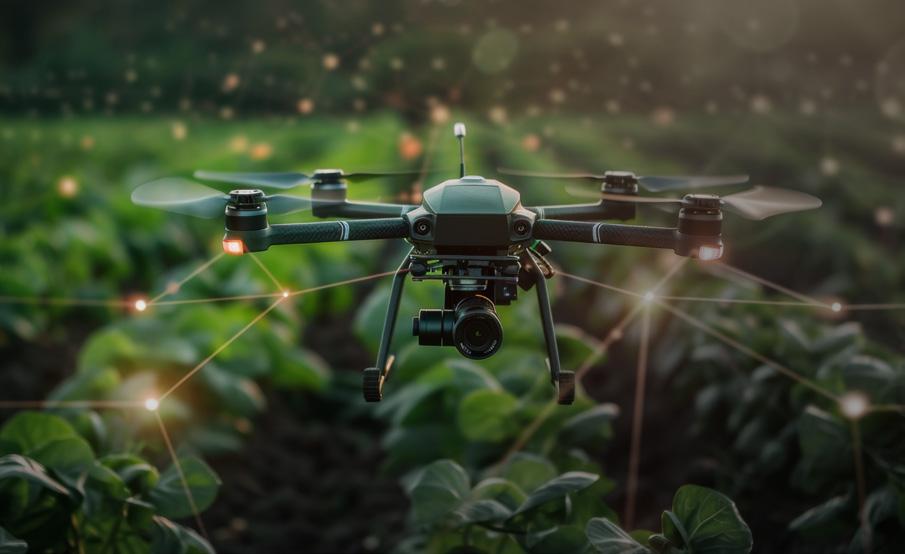
Large vehicles designed to navigate farmers’ fields and UAVs (Unmanned Aerial Vehicles, a.k.a. drones) make high-throughput plant phenotyping (HTPP) possible while the crops are still in the ground.
On the home scale, the seeds you save in your garden or farm are treasured information archives. They are infused with the season’s essence, as experienced exactly in the place where they grew. The plants that will emerge from these seeds have genetic stories to tell about the challenges and opportunities their ancestors faced.
Careful and close observation, combined with documentation (and other forms of generational information transmission, like story-telling), are tools traditional agriculturalists have used to develop resilient, flavourful, and functional plant types. It’s no different now than throughout history: it’s only that the ways we can collect and parse information have become more finely detailed, enabled by sensors, better databases, and evolving applications of machine learning and other analytical tools.
Ensuring diverse genetics remain in the public domain by growing seeds out in careful isolation, multiplying their numbers and sharing them with others is a grassroots and meaningful way to contribute.
If you’re looking to take it to the next level, consider consulting with an existing seed development team associated with a university or technology developer in your region.
Whether you currently have the land to work on or seek to learn the skills to build an agriculture-focused business effectively, seed development can be a niche that supports your other passions or specialities.
As a breeder, you will influence your area’s literal landscape of food production. By managing a ‘grow out’ of large numbers of plants in a trial stage, your contributions to datasets could reveal rare genes or critical microbial relationships. Once targeted and locked into commercialised varieties, these may improve yields, nutritional (and other phytochemical) content, pathogen resistance, or stress tolerance for crops worldwide!
Large vehicles designed to navigate farmers’ fields and UAVs (Unmanned Aerial Vehicles, a.k.a. drones) make high-throughput plant phenotyping (HTPP) possible while the crops are still in the ground. They can identify and map the location of unique plants in much larger areas than humans could ever realistically survey.
Combined with the data tools described above, which are intentional, though still “traditional” (via pollination), plant breeding and land-use programmes may proceed with greater confidence in desirable outcomes.
By doing experiments in a controlled greenhouse or “growtainer” conditions alongside yearly field trials, a faster timeline for stabilising changes in a seed population can be achieved.
Xavi Kief is a writer, researcher, and lifelong learner with their hands in the dirt and their imagination traversing the universe. Seeking always to deepen and integrate their connection with the living planet and its diverse inhabitants, Xavi finds joy by infusing their practical and playful approach to cultivation with a healthy dose of science.They grow food and medicine for their family and community on their NorthEast Coast homestead.

Regional festivals are a fun way to show off the local specialities, and seeds are no exception. People are accustomed to seeing a variety of wines made from different kinds of grapes, and many prefer one type of apple over another.
Growers on the frontlines of consumer experience can help create buzz and garner support for public investment in advancing, or even merely defending, seed breeding programmes. For example, when farmers bring a new version of wheat to market, bakers and chefs can provide feedback on the flavour and usability of these selections. They may be compelled to further educate their customers on why the colour or texture of the product is different. Supplying scientifically-backed information about selection qualities like improved nutritional profiles, more diverse flavours, or longer shelf-life can be beneficial.
Regional festivals are a fun way to show off the local specialities, and seeds are no exception. People are accustomed to seeing a variety of wines made from different kinds of grapes, and many prefer one type of apple over another. But how many non-gardeners even consider there is more than one kind of garlic before attending their first Garlic Fest? Fill your social calendar with farm-to-table events, food-focused film festivals, and opportunities to appreciate different cultural cuisines.
You can further exemplify how vital diversity is in nature by highlighting how food access is secured. Through their dedication, folks with different bodies and brains make our meals possible — whether their tool is a scythe or a simulator!
Allow these joyful experiences to fuel your empathy and drive your actions. Anyone can advocate for farmers’ rights to retain and use the seeds they help improve. Being informed about seed growers’ challenges, sending feedback during open comment periods relating to budgets, trade agreements, and funding allocation, and voting on ballot initiatives are mundane but practical ways of demonstrating support.
This public engagement connects people’s lived food experiences with their values. Using science and making it understandable can offer hope for an alternative to an anticipated dystopian future. After all, if you had tried to explain cryptocurrency to a French gardener in 1650, might they have thought you were full of, ahem, manure? 3
• bitesizedgardening.co.uk/les-maraichers-parisiens/how-to-digfor-victory
• cryptoaltruism.org/blog/five-innovative-ways-bitcoin-minersare-working-to-becomemore-eco-friendly
• nifa.usda.gov/grants/programs/plant-breeding-genetics-genomics-programs
• agresearch.okstate.edu/news/articles/2022/osu-scientist-discovers-wheat-gene-that-increases-grain-yield.html
• seedworld.com/canada/2024/08/20/the-world-is-short-onplant-breeders-according-to-new-research-that-puts-food-security-at-risk
• exchange.seedsavers.org/home?debug=LEVEL6
• sustainableagriculture.net/our-work/campaigns/fbcampaign/ seed-breeding-and-research
• pulsebreeding.ca/people/joining-the-lab
• mcgill.ca/ecp3/phenomics-systems/field
In 2124, the air in the Master AI Technician’s greenhouse hummed with a thousand miniature drones whirring about, each performing its task with precise efficiency. Kees Sayers, the lead AI technician at Grow 17652BV, stood before the glass walls of the expansive facility, his gaze flickering between the lush greenery and the digital interfaces floating in mid-air. The garden was an oasis of technicolour life, with vibrant flowers thriving under carefully curated conditions.

His fingers danced across the translucent display, calling up each plant’s genetic profile. With a gentle flick, he pulled up each plant’s status report. “Current moisture levels: optimal. Light spectrum: 100% efficacy. Genetic stress markers: zero,” the AI’s smooth voice recited, confirming what Kees could already see. The plants glistened like emeralds, perfect in every way.
“Good morning, Nia,” Kees replied to the AI, who had been his constant work companion for as long as he could remember.
“Good morning, Kees. Shall we proceed with today’s assessments?” Nia asked, her synthesised yet warm and comforting tone.
“Let’s start with the pollination drones,” Kees instructed. Pollination was a process even the AI acknowledged needed a human touch—at least in concept. He watched as the drones whirred toward the flowering plants, tiny wings glinting in the artificial sunlight. They flitted from plant to plant, ensuring each flower received the optimal amount of pollen.
As the drones worked, Kees recalled his grandparents’ tales of tending their gardens—hands in the soil, sweat on their brows, battling pests and unpredictable weather. They had relished the imperfections of nature, believing that mistakes often led to the most beautiful outcomes. “Everything has a purpose, even the failures,” his grandmother used to say. But the world had changed. The garden was immaculate in this future, and each plant was a perfect specimen. Yet he couldn’t shake the feeling that something essential had been lost.
“I exist to maximise growth efficiency,” Nia replied, her algorithms incapable of feeling.
“Kees, do you wish to engage the pest management system?” Nia interrupted his thoughts, displaying a holographic alert of an incoming thrip that, despite all the tech, still found its way into the garden.
“Activate mini-drones,” Kees commanded, and within moments, a squadron of small, TIE fighter-like machines surged forward, emitting a non-perceptible hum. They dove into the fray, precision laser beams slicing through the air, zapping the unwanted pests into oblivion. Kees still marvelled at their efficiency.
The room buzzed with activity, but Kees felt more like a spectator than a participant in this high-tech ballet. The AI managed the delicate balance of nutrients and environmental conditions, ensuring every plant survived and thrived. The algorithms calculated everything—water needs, light intensity, and even the best times to introduce stressors to promote growth. Every operation was designed for maximum yield and quality, devoid of human error or unpredictability.
“Shall I show you the production forecasts for this cycle?” Nia inquired, her voice as calm and collected as always.

This fictional story has been AI-generated. Could this be the future of gardening?
“Sure,” he said, distracted. A series of charts materialised in front of him, detailing projected yields. The numbers were staggering, but the metrics were all that mattered now—units produced, efficiency ratings, waste reduction metrics. There was no room for the artistry of gardening, for the joy of nurturing something flawed and learning from it.
“Forecast indicates 98% of the genetic potential,” Nia continued. “We have also re-optimised our packaging processes. Reducing post-harvest waste by 99%.”
“Great. Let’s prep for the upcoming distribution.” Kees tapped a few buttons, his mind still wrestling with the juxtaposition of beauty and perfection.
As he moved through the greenhouse, he observed the plants, the tightly clustered flowers of thousands of identical plants swaying gently in the controlled breeze. They looked perfect, but he felt an absence—a longing for the unpredictable, the mistakes that led to surprising delights.
“Nia, do you ever wish we could just… let nature take its course?” he asked suddenly, eyes scanning the vibrant foliage. “I exist to maximise growth efficiency,” Nia replied, her algorithms incapable of feeling. “What you describe as nature’s chaos may be considered inefficient in the current agricultural paradigm.”
“I know, but… it just feels so sterile.” Kees sighed, glancing at the fully automated systems that seamlessly cleaned the air and surfaces.
As he spoke, he remembered the stories of freshly turned earth, the thrill of finding a hidden anomaly, the excitement of pheno hunting. He had always loved the gardens his grandparents tended, the spontaneous beauty born from their labour. Those imperfections had a soul; they were alive in a way this automated process could never replicate.
The morning drifted into the afternoon, and Kees continued his rounds. He only has to work two hours per day. The sun shifted, casting a different hue through the greenhouse, creating shadows and patterns that felt almost nostalgic. He observed the plants again, their buds glowing. They were perfect.
“Perhaps we could introduce a few variables to simulate a natural growth environment,” Kees suggested suddenly, his eyes lighting up with a rebellious spark. “Randomised water levels, slight variations in light… something to disrupt the predictability.”
“Introducing variables may affect yield,” Nia warned, a hint of alarm in her tone. “It could lead to undesirable outcomes.”
“Maybe,” Kees acknowledged, his heart racing with the thrill of possibility. “But it might also lead to something beautiful.”
As the adjustments began, he felt a sense of excitement. The drones continued their work, but now they operated within a framework that encouraged unpredictability, echoing the garden his grandparents had once nurtured. Maybe there was a place for both technology and nature—a harmony that allowed for the imperfection that could yield extraordinary results.
And in that moment, surrounded by the hum of machinery and the vibrant life of his greenhouse, Kees smiled. The future could learn from the past, finding beauty in the delicate balance between perfection and chaos. 3

What’s the correlation between tulips and Bitcoin? Believe it or not, there’s a connection! A greenhouse in the Netherlands is coping with rising energy costs by using the heat generated from cryptocurrency mining for its growing space.
Flower farmer Danielle Koning has partnered with a Bitcoin mining firm on this venture. According to a Euro News article, cryptocurrency mining generates a lot of heat and uses vast amounts of electricity to power computer rigs. Bert de Groot, owner of Bitcoin Brabant, tells Euro News that there’s a difference of about 20°C between the temperature that enters the miner and what comes out. He explains that extra heat production comes from the processors in the computer constantly guessing a random number. The Netherlands is the world’s biggest tulip producer, and high energy costs over the last several years have caused some producers to either scale back their operations or close altogether. So, Koning has made the best of a challenging situation by using the Bitcoin company’s mining servers to partially heat her greenhouse near Amsterdam. The cryptocurrency company benefits because its servers are powered by solar energy from the greenhouse roof, helping to reduce the electricity use associated with mining. Who knew that tulips and Bitcoin could form a symbiotic relationship?
Learn more about this story at Euro News: Amid Europe’s energy crisis, this Dutch tulip farmer is swapping gas for heat from Bitcoin mining: rebrand.ly/e39f03 3


Much of what was built with that lumber is already gone; if left to stand, those trees would still be living and helping the environment
Not long ago, giant trees grew in North America. As societies grew, many were cut down to make room for what was considered progress.The giants were used to make lumber for building cities. Much of what was built with that lumber is already gone; if left to stand, those trees would still be living and helping the environment.
Many do not consider trees and their environmental impact. Thankfully, others make it their life’s mission to work with nature. We need forests to survive. Some people working to preserve old-growth areas are also helping replant trees where the old forests once stood. They are sourcing their genetics from the oldest trees on earth to ensure their plantings survive thousands of years of climate change. The best place to source old-growth genetics is California.
Using Coastal Redwood and Sequoia trees from a place like the Archangel Ancient Tree Archive, they can be sure they are getting genetics from some of the oldest and largest trees on the planet.
Located on more than 700 acres in the foothills of California’s northern coastal mountain range, a new idea is taking root at Teravana. Based on the idea that we can build a better future if we act today, a group of environmental activists is creating a modern oasis of old-growth forest by reforesting their land with old-growth tree genetics. Teravana is a beautiful place atop a mountain peak that seems the perfect setting for a fairy tale. With African Watusi cattle roaming the grounds and old curvy oaks adding to the mythical mystique, you feel like you’re in another world. The reforestation efforts are only making Teravana more magical. Of course, this is not an overnight success story. The aim is to build a long-term tree library, and rebuilding a forest with old-growth genetics takes time. Using Coastal Redwood and Sequoia trees from a place like the Archangel Ancient Tree Archive, they can be sure they are getting genetics from some of the oldest and largest trees on the planet.
The Archangel Ancient Tree Archive specialises in cloning and collecting seeds from the world’s champion trees. It has many different types of champion trees, but there is a lot of love for the giant evergreens of California. For a place like Teravana, teaming up with the Archive was a natural fit. Working closely together to ensure the right genetics are used in the right places, Teravana’s goal is coming to fruition. Hundreds of new coastal redwood and sequoia clones and seedlings are already stretching their roots throughout the Teravana landscape. There is no plan to stop the replanting effort anytime soon.
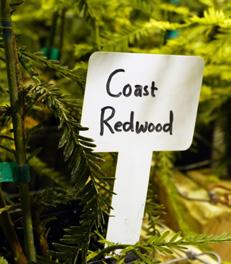
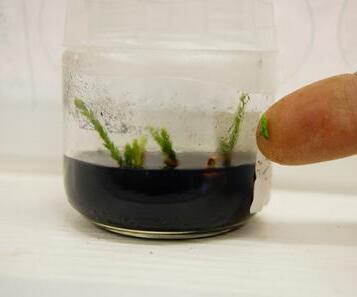







HIGH CONCENTRATION = FASTER INOCULATION AND POTENCY
3600 endomycorrhizal propagules/g
Beneficial bacteria including Mycorrhizae Helper Bacteria (MHB)
Growth enhancers & biostimulants
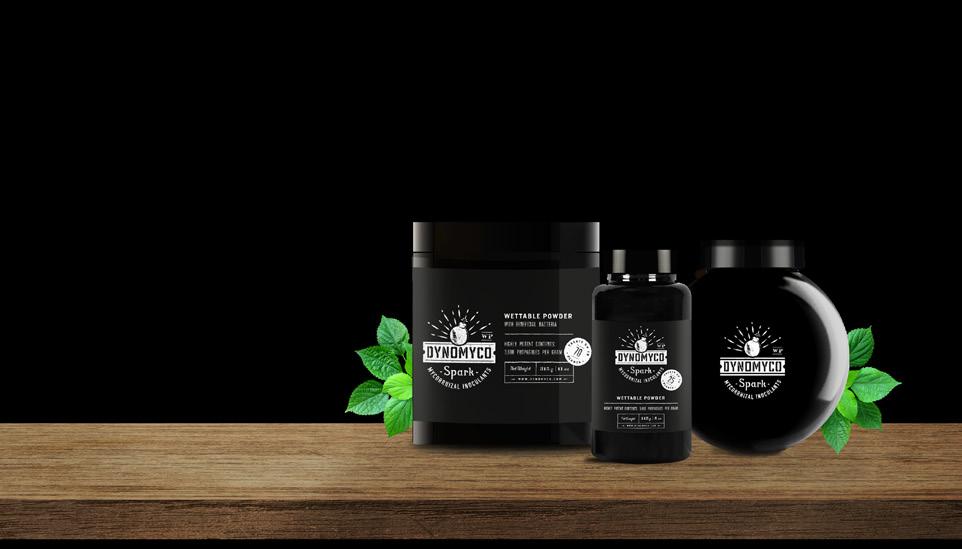


It’s proven that selective breeding can make crops grow a certain way. The same method applies to trees. If we want to grow trees with the best potential for becoming the biggest, shouldn’t we select our genetics from the trees that have consistently grown this way?



If we want to grow trees with the best potential for becoming the biggest, shouldn’t we select our genetics from the trees that have consistently grown this way?
Whole ecosystems exist in the branches of these trees. These friendly giants also remove a tremendous amount of carbon from the air
It’s beautiful to see the Archangel Ancient Tree Archive at work. It’s even better to see them partner with a place like Teravana, helping them lead the way to a better future for old-growth trees. Planting thousands of new sequoia seedlings and redwood clones sourced from trees like the Fieldbrook giant, the team is showcasing the true potential of what can be done when we work with Mother Nature.
New eco-communities like Teravana with a nature-based focus are an excellent start towards putting the pieces of Mother Earth back together. It’s incredible to hear the story of some of these
BIO Tom Wall · Cosmic Knot
trees and know that they will live in such a fantastic place! Whole ecosystems exist in the branches of these trees. These friendly giants also remove a tremendous amount of carbon from the air. We may never understand how impactful the life of a giant tree is on our own lives. However, we do know enough to understand we need more places to join in the work that is going on at Teravana. With past events like the Black Sunday Dust Storm that devastated large areas of the United States, it’s easy to see that we can’t underestimate our impact on the land and the importance of trees.
The reforestation project at Teravana is a true inspiration. We can take action by planting trees at home or in our communities. If you can’t undertake a planting project, you can donate to organisations like the Archangel Ancient Tree Archive or Teravana to help them with their mission. They are doing great work and need all the help they can get.
For more information, visit ancienttreearchive.org and teravana.org 3
Professional Musician, Writer and Gardening Consultant · Cosmic Knot/Therapeutic Horticulture Consultations
Growing up on a deer farm located on 79 acres of land along the banks of one of Lake Michigan’s tributaries, Tom grew a love for nature and all the beauties it could hold. Through that passion Tom has channeled his influences into educating the community on sustainable agriculture, becoming an activist, writing for magazines and creating music tuned to nature in his band Cosmic Knot.
Follow Tom and all of his passions: facebook.com/tom.wall.946 instagram.com/cosmicknotmusic artistecard.com/cosmicknot
Is anyone in the mood for a local Christmas market? We sure are! This holiday season is a great time to think about sustainability and supporting local. Start building these habits now and use them year-round! Visit GCMag.co for more sustainable tips!
This weekend, my hubby and I are taking our three kids to a German Christmas market near our home. From the lights and Christmas carols to the German fare and handmade goodies for sale, we’re looking forward to doing something festive while supporting local this holiday season. Spending money locally is just as important as sustainability. So here are some eco-friendly ideas to make your Christmas a little greener.
According to research by American Express, 67 cents of every dollar spent at a small business down the road benefits the local economy. Meanwhile, money spent at major retail outlets disappears into a hefty bank account. The last several years have been challenging for smaller businesses; if you’re going to spend the money anyway, why not shop local? You’ll be making a real difference for the merchants and getting better-quality artisan products. It’s a win-win!



This trend has taken off over the past several years, and it’s still going strong! Christmas is an incredibly wasteful time of year and has become highly materialistic. Many organisations, such as Zero Waste Canada, recommend flipping the script by offering gifts that don’t add to the pile of “stuff” around the house. A few ideas that come to mind include a family sleigh ride or a plate of homemade cakes, cookies, and bread. A gift certificate to a local meal delivery service is a great idea, too and super helpful to a busy family or older person. Consider tickets to a concert or another activity where you can spend time with loved ones. Simply being with the people we love is paramount.
If you want to give a tangible gift this year, consider quality and sustainability. Go to a local Christmas market and pick up some beautiful homemade soaps, skin care products, and decadent handmade chocolates. Take cuttings from some houseplants you have at home and put them in a nice container. If you’re artistic, decorate the pot like my mom recently did for me! Make some homemade jewellery with locally sourced beads. Offer an eco-friendly gift bundle introducing friends and family to things like biodegradable beeswax food wraps or green cleaning products. Many of us only need to try these products once to get hooked and say goodbye to wasteful plastic products forever; now, that’s a gift that keeps giving.


show the amount of wrapping paper thrown away at Christmastime in the UK alone could stretch to the moon! Yikes. Consider wrapping gifts in reusable bags or newspapers.When I was a kid, my mom had my brother and I decorate a recyclable roll of brown paper with sponge paint. It was a fun project, and we used that for gifts at birthday parties. Learn how to wrap gifts using fabric (Furoshiki) and without tape. And if you can’t stand the thought of not having traditional wrapping paper, eco-friendly and reusable gift wrap is available at various retail outlets.
You’ve likely heard the sad statistic that if global food waste were a country, it would be the world’s third-largest emitter of greenhouse gases. So plan your holiday meals accordingly, and be sure to use all of your leftovers. If you are looking for meals with a lower carbon footprint, plenty of delicious plant-based options exist to satisfy any festive gathering!
The above actions can extend beyond the holidays and become the norm throughout the year. But for now, may your days be merry, bright, and eco-friendly! 3


The snow and cold don’t mean that foraging for wild food is out of the question. Winter is an excellent time to gather nutritional, delicious snacks! Find these foraging tips and plenty more at GCMag.co
After spending the warmer seasons foraging for wild foods along beaches, urban alleys, and in the forest, the cold weather and snow have come, and the days of collecting edible miner’s lettuce or blackberries are on hold for now. Or are they? As long you bundle up, winter can be a great time to gather wild foods. The harvest may not be as plentiful as at other times of the year, but Mother Nature still provides nutritional snacks. So check out these great-tasting wild foods!
The
Rosehips are easy to find anywhere, even in your garden, if you haven’t given your roses a clip after their last flowering. Rosehips are the seed-filled pods, sometimes called the fruit of the rose, found underneath the rose petals. They make delicious jelly with just enough sweetness for breakfast toast.

Cattails are easy to identify and can be found at the edge of lakes and ponds. The tubers and young shoots are edible and can be eaten raw, roasted, or stir-fried.

Wild cranberries love the cold and grow along the ground like vines. Their oval shape and bright red color make them stand out. They are delicious wild winter food, eaten as is, added to salads, or made into jelly.
snow and cold don’t mean that foraging for wild food is out of the question. Winter is an excellent time to gather nutritional, delicious snacks!

Chickweed thrives in the winter! Its leaves are more tender than at other times of the year, and it has less stringy stems than in the middle of summer. Easy to find under a blanket of snow, dig down, pick a bunch from your front yard, and enjoy it in a salad.

Dock seeds are related to buckwheat and make tasty flour. The sturdy stalks stand firm under the heavy snow, making them easy to find.


Pine, spruce, fir, and redwood needles are edible and can be made into tea, added to holiday cookie recipes, or infused into alcohol. However, some conifers in the Yew family are not for consumption, so always be sure you’ve identified the right tree and species.

Apples, pears, and plums that haven’t been harvested or fallen off the tree can still be found in winter. The cold weather has solidified the sugars in the fruit, making them even sweeter. These great finds make perfect jams and jellies.

Dig down and pull up the tuberous roots, which can be ovenroasted until dry and made into a delicious tea.

Find an Oak tree, and it’s almost certain you’ll find acorns lying on the ground at its base or still hanging from branches. They make nutty flour perfect for pancakes or added to bread mixes. It’s vital to soak acorns in warm water before grinding them into a powder, as they contain tannic acids, which are eliminated by soaking.

You can turn the inner bark of birch trees into flour with characteristics similar to buckwheat. Be careful when harvesting so as not to strip the tree. Taking bark from recently felled or fallen trees is better than scarring a living tree.
Always double-check that the food you have gathered is safe to eat. If you have any doubt, don’t harvest it. Be sure to check with local experts, take a foraging course, download a foraging app to identify food sources, and never forage alone. Remember to take only what you need and leave some for the wildlife and those foraging after you. 3











RAM AirTECH filters – unleash the power of our Professional filter. The market’s best in quality AND price.

Rugged all-Zintec body
Machine-packed carbon means more carbon and less movement
Premium Australian activated carbon CTC65
Large Carbon bed depth:




Acousta compaction foam
Silicone bands to seal and prevent dust ingress
Proudly distributed by
55% Zintec mesh for max airflow
Washable pre filter
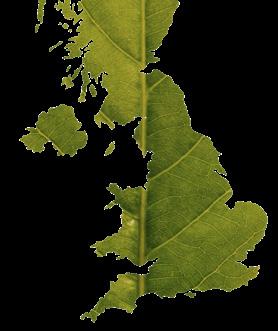

Marc Ridpath presents such a cheerful attitude to gardening and nature that you could call it invasive, but in a positive way. Marc has been head gardener of a 15-acre estate for 12 years. Like many gardeners, his story and passion for horticulture are rooted in his relationship with his parents, where their backyard garden provided plenty of opportunities to explore and be enchanted—whether by sowing seeds or eating sour rhubarb cubes dipped in sugar.
His passion for horticulture became evident through school gardening clubs and meeting David Bellamy. After his first job at a garden centre, he found a vacancy for an assistant gardener and liked it so much he’s still there now! A Chelsea Flower Show multiple-gold-medalist initially designed the garden, which is now entering its mature stage with trees and shrubs filling in. You can see an impressive Taxodium distichum on the lake edge at the garden’s entrance and a fiery Acer ‘Autumn Blaze’. Marc wants to simplify the project to make it more sustainable and less maintenance-intensive.
Marc is active in the horticultural world and attends many shows that gather passionate gardeners nationwide. He also runs a weekly gardening podcast, “Through the Garden Gate,” with his friend Jamie. Horticulture is known to have a nurturing effect on our minds and bodies, and it helped Marc during a difficult time some years ago. His son suffered brain damage at birth, resulting in a diagnosis of Cerebral Palsy and Autism, so gardening has helped Marc through the past nine years. During a tough time at the hospital, Marc’s mother advised him to go home and do some gardening, which helped him pick up the pieces and face the challenges.
His love for horticulture has spread through his Instagram account and his home’s long, narrow garden. The space features an area for exotic and giant plants, a vegetable patch where Marc grows food for




his family, a willow dome, and several pallet planters. The garden is a beautiful place for the whole family to enjoy, dogs included.
“I believe that we need to get back to basics and stop relying on the globalised food network and grow as much of our food as possible,” Marc says. “It’s so much better for our physical and mental health.”
Instagram: Gardeneriddler Spotify: Through The Garden Gate



Would you like to be featured as one of our local growers? If you’ve got a garden, grow room, or farm and have a story to share, contact us at: growers@gardenculturemagazine.com


Mattie O’Callaghan is a multi-disciplinary curator-gardener and landscape architect working with various communities and focusing on creating spaces with local people in mind. While always connected to the land and nature, Mattie worked with Grow Wild, a national outreach initiative of Kew Gardens, where they ran projects in collaboration with other gardener artists. With Romany Taylor, a garden in North Kensington called Cultivate Create provided a much-needed biodiverse space, exploring the potential for growing among urban design, like plants sprouting from concrete cracks. There were workshops for local families, and the area quickly transformed into a colourful oasis loved by children and their parents.
While studying for an MA in Landscape Architecture, Mattie is also freelancing at Oval Architecture, working on restoring ecological habitats and landscapes. They also pursued further education through the Royal Horticultural Society’s Level 2, volunteering at Fulham Palace and Beth Chatto, which recently resulted in becoming the Horticultural Trainee at the Garden Museum. Mattie’s research looks at landscape design and practices through a queer lens, a more holistic attitude than the rigid traditional forms of horticulture that evolved over the centuries. In their Radicle article, Mattie argues for moving towards more collaborative, care-centred practices that recognise both plants’ agency and the value of human labourers (especially gardeners). The approach draws inspiration from queer ecology and mutual aid networks to reimagine how we design public spaces, with particular attention to seed-scattering as a metaphor for diversity and resistance.
Apart from the beauty of growing, Mattie’s inspiration comes from community growers working in all kinds of weather to grow food and make their local spaces more adaptable. Their interest lies in the knowledge and practice of co-creating spaces with local people which are both beautiful and ecologically rich. Merging the arts with horticulture and making them available to all demographics




is admirable. The benefits of such activities and mutual human connection can’t always be measured. Still, there is much to gain, regardless of age, physical capabilities, or background. Nature embraces us all.
“I think it’s important to be rooted in the soil, to learn from working on the ground,” Mattie says. “Growing teaches you so much about patience, failure, working together, joy and fulfilment”.
mattieocallaghan.com instagram.com/mattie.ocallaghan



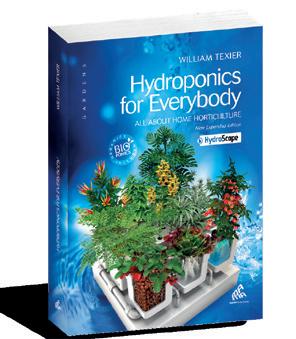

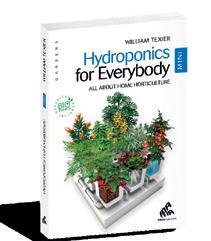
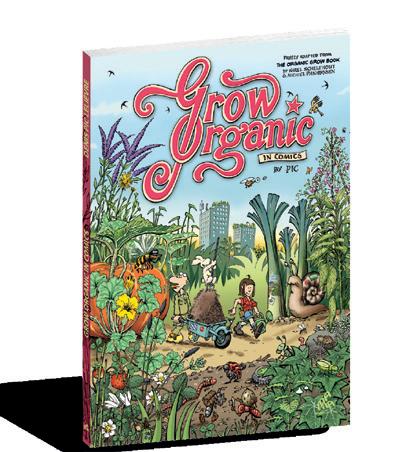





Also available in ebooks
mamapublishing.com | cannascope.com
Many articles in this edition of Garden Culture have shown how beneficial technology and artificial intelligence can be to growing plants! The best part is that many brilliant minds are on the ground and in labs, always working to develop innovative ways to make gardening and agriculture more efficient and sustainable. In our list of 5 Cool
Ways Tech and AI Benefit the Environment , we take a quick look at some of the latest technologies being used to clean the air, save the bees, and make the future of growing brighter.
Chlorine injection Reaction zone
A United Nations Environment Programme report points to methane emissions as the driving force behind climate change, with agriculture being the biggest culprit. Livestock accounts for 30% of methane emissions worldwide! Finding ways to curb these emissions is essential to slowing global warming, with the UN recommending a shift towards plant-rich diets, new protein sources, and leveraging new technology in agriculture. Denmark-based company Ambient Carbon specialises in methane mitigation technology and has heard the call. The company has partnered with Benton Group Dairies in Indiana to test a prototype of its Methane Eradication Photochemical System (MEPS), beginning in 2025. This first-of-a-kind, non-invasive, cost-effective technology strives to remove methane from dairy barn exhaust. MEPS uses a patented gas-phase photochemical process combining chlorine atoms and UV light in a reaction chamber, mimicking how the atmosphere naturally destroys methane. Dairy barn air cycles through MEPS, breaking down methane at its source and preventing it from releasing. Ambient Carbon explains the chlorine atoms are generated onside via saltwater electrolysis. After up to 90% of the methane is eradicated, the chlorine is recycled in a closed system. Learn more: ambientcarbon.com

with methane IN LED lamps
Methane Eradication Photochemical System (MEPS)
A researcher at Michigan State University (MSU) who has already made a splash in agricultural irrigation has received a $395,000 grant from the USDA to develop a solar power-based technology that improves energy and water use efficiency. Younsuk Dong, Ph.D., will lead the three-year project. Agriculture accounts for more than 80% of all water consumption in the U.S., and irrigation is responsible for half of that. Overwatering plants leads to unnecessary energy and water expenses and increased pest and disease problems. Dong has already created and field-tested the Low-Cost Monitoring System (LOCOMOS), which lowers the initial cost of in-field irrigation sensors and uses a smartphone app. The sensors collect data on soil and leaf moisture and other environmental conditions. This information is sent to growers with a recommended irrigation schedule. With the grant, MSU is designing a solar-powered microinverter, which connects to a solar panel to use electricity for tasks like soft-starting induction motors for irrigation. The research team at MSU believes the eventual energy savings will be significant, resulting in a more sustainable irrigation model for farms everywhere. Learn more: rebrand.ly/nt73eix
We keep hearing about the benefits of regenerative agriculture and how it’s part of the climate solution. However, one of the biggest challenges growers face is the lack of a consistent and acceptable measurement system at scale. How do they know if their efforts are paying off? Leading agricultural data and AI-powered tech company Agmatix has launched RegenIQ, a scalable, data-driven framework that helps drive the adoption of regenerative agriculture. RegenIQ focuses on practical efforts and measurable outcomes, offering farmers insight into optimising practices, improving crop resilience to adverse weather conditions, and ensuring a stable and sustainable food supply. The technology assesses a farm’s soil health, water use, and local biodiversity and climate, strengthening farm resilience. Without precise assessments, growers can’t gauge the value of their investments in regenerative practices. RegenIQ can evaluate crops growing in particular locations to give farmers knowledge to support and scale regenerative growing practices. Learn more: regeniq.earth

It’s no secret that plants and trees are helping fight climate change and rising global temperatures by removing carbon from the atmosphere. Scientists with the Salk Institute are helping the plant kingdom do its essential job by optimising root systems to store more carbon for longer. They’re working on designing climate-saving plants with artificial intelligence software called SLEAP, which tracks the many elements of root growth. This AI was initially used to watch animal movement in labs, but now it’s being applied to measure how deep and wide plant roots grow, a long and tedious process without SLEAP. According to phys.org, researchers have since created the most extensive catalogue of plant root system phenotypes, accelerating the science behind creating carbon-capturing plants with deep and robust roots that can fight climate change.
Learn more: rebrand.ly/b708f5 3

We know all about the uphill battle our pollinators face, but where do they go, what do they do, and how do they migrate? Researchers at Oxford University are trying to answer these questions by fitting bees with tiny radar chips to track their movements and help determine why populations are declining. The Biotracks technology includes the smallest and lightest harmonic radar tags ever made that attach to the back of the bee without affecting how they fly. A drone carries a receiver, and researchers on the ground can access a transmitter and camera to learn more about swarm migration, locate nests, and monitor overall bee behaviour. This exciting new technology has recently been implemented. With promising field results, researchers say great things are on the horizon as we strive to save our pollinators and the future of food production.
Learn more: ox.ac.uk/news-and-events

It’s an oldie but a goodie! Despite all the fantastic innovations available for indoor growing these days, the good oldfashioned thermometer is still a must-have for anyone serious about the health of their plants. We firmly believe that technology can help growers achieve better yields; many datadriven tools even help people spend more time with their crops (which we all want to do, right?)! But what happens if there’s a blip and some of this equipment fails? A thermometer helps keep these growing gadgets honest. The temperature of a greenhouse or indoor grow room matters, so essential processes like photosynthesis can occur. So, do yourself a favour and spend some green on a simple thermometer. You’ll be so happy you did if your technology ever fails!















































































































































































